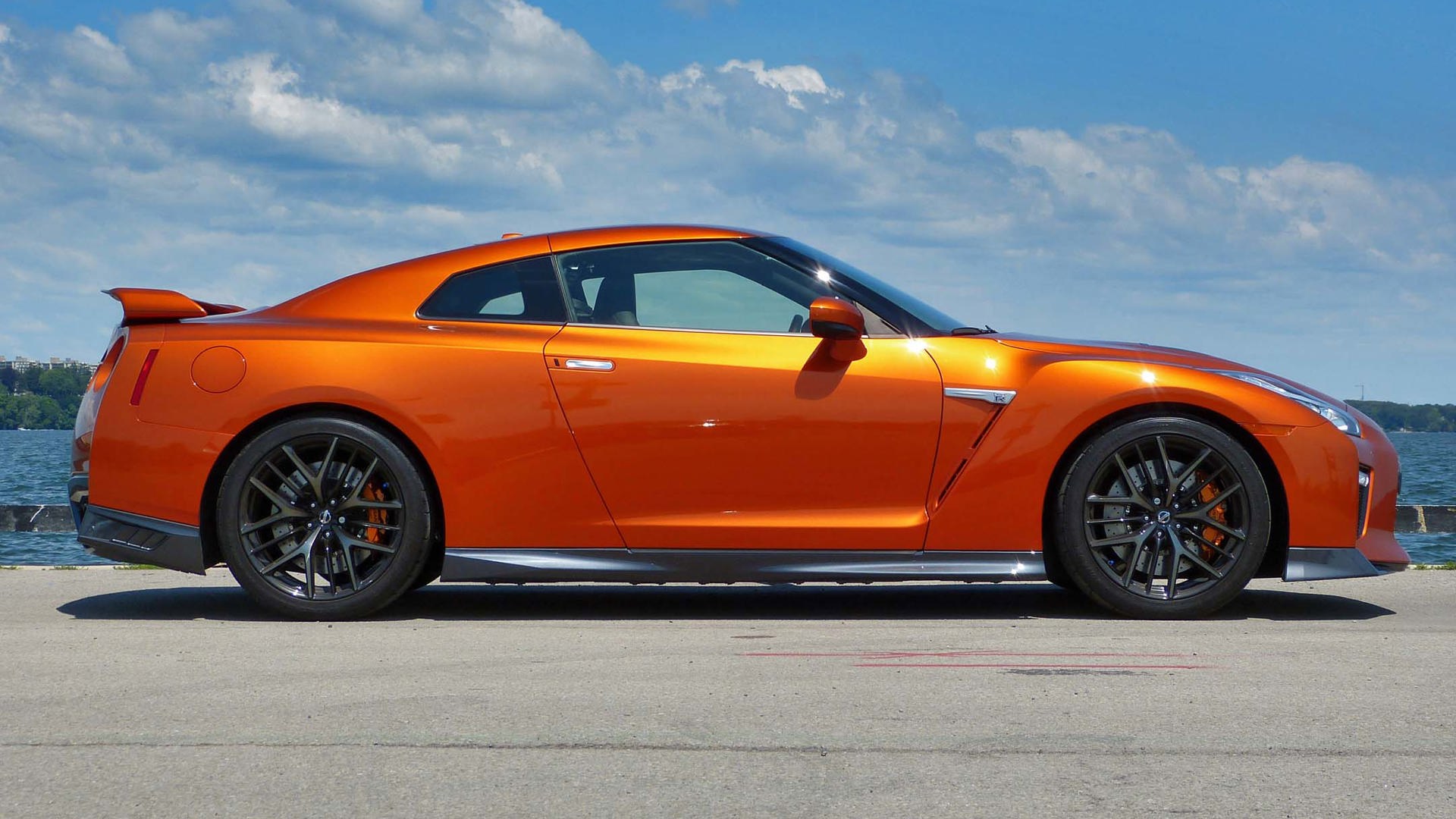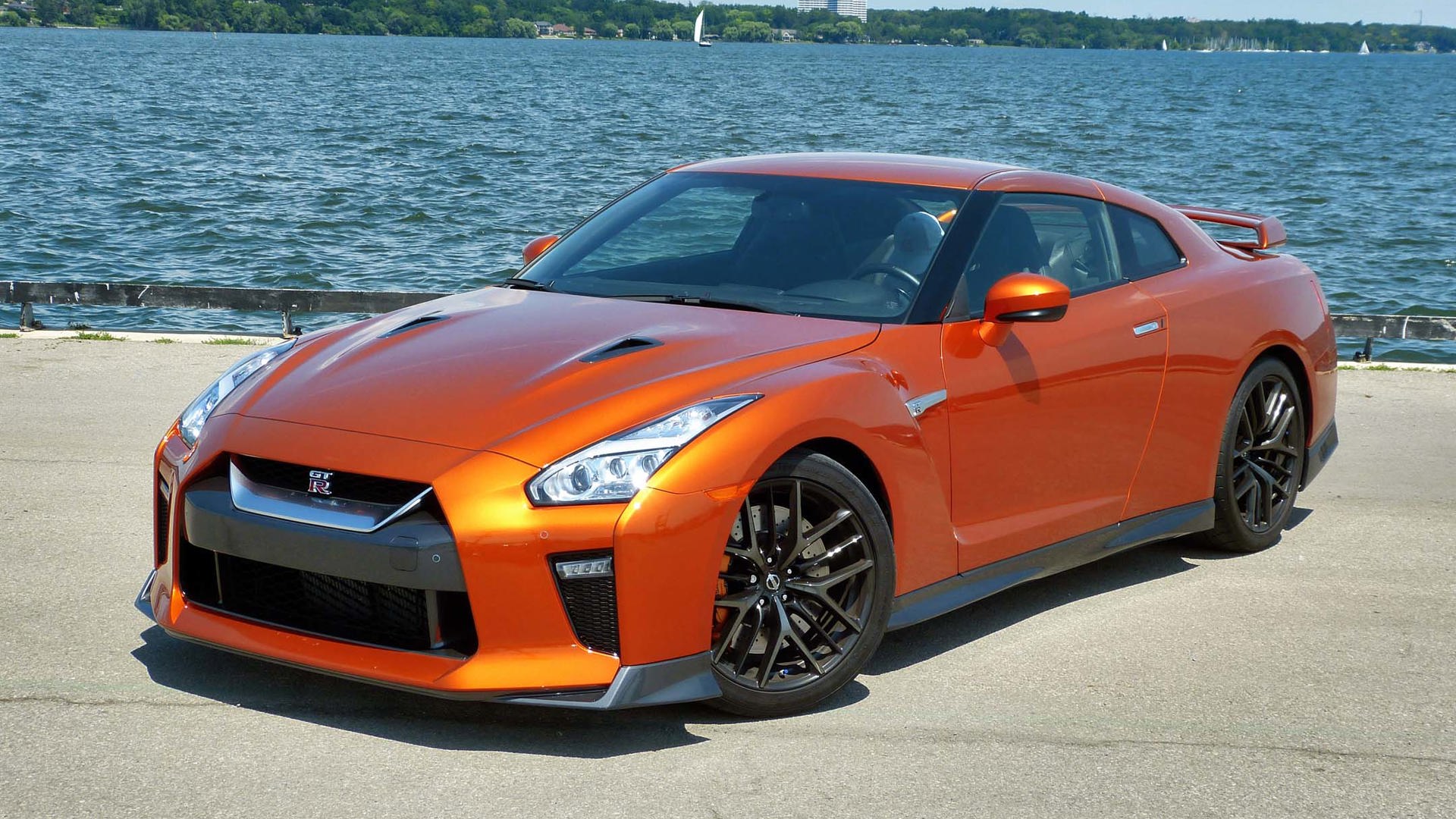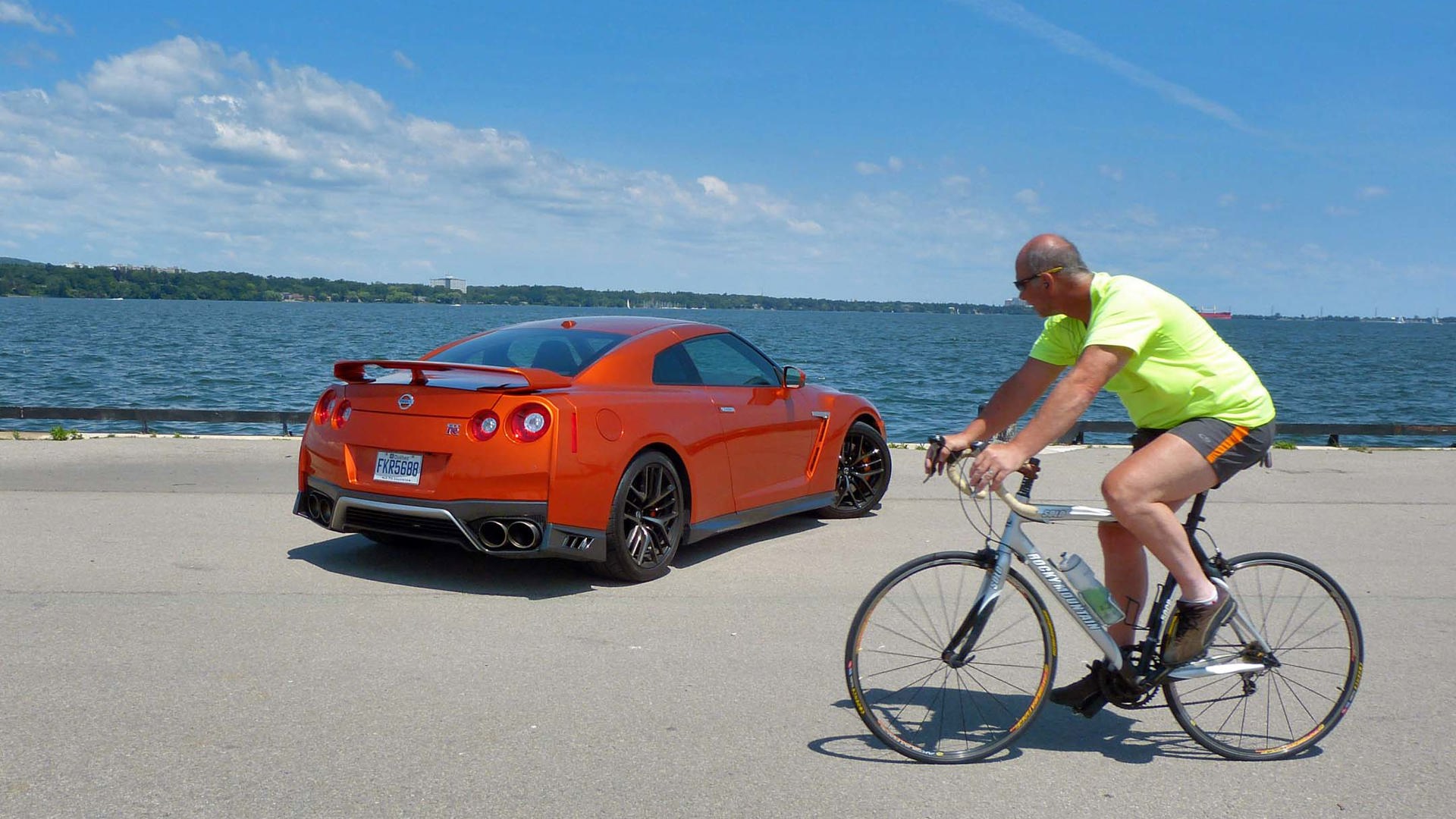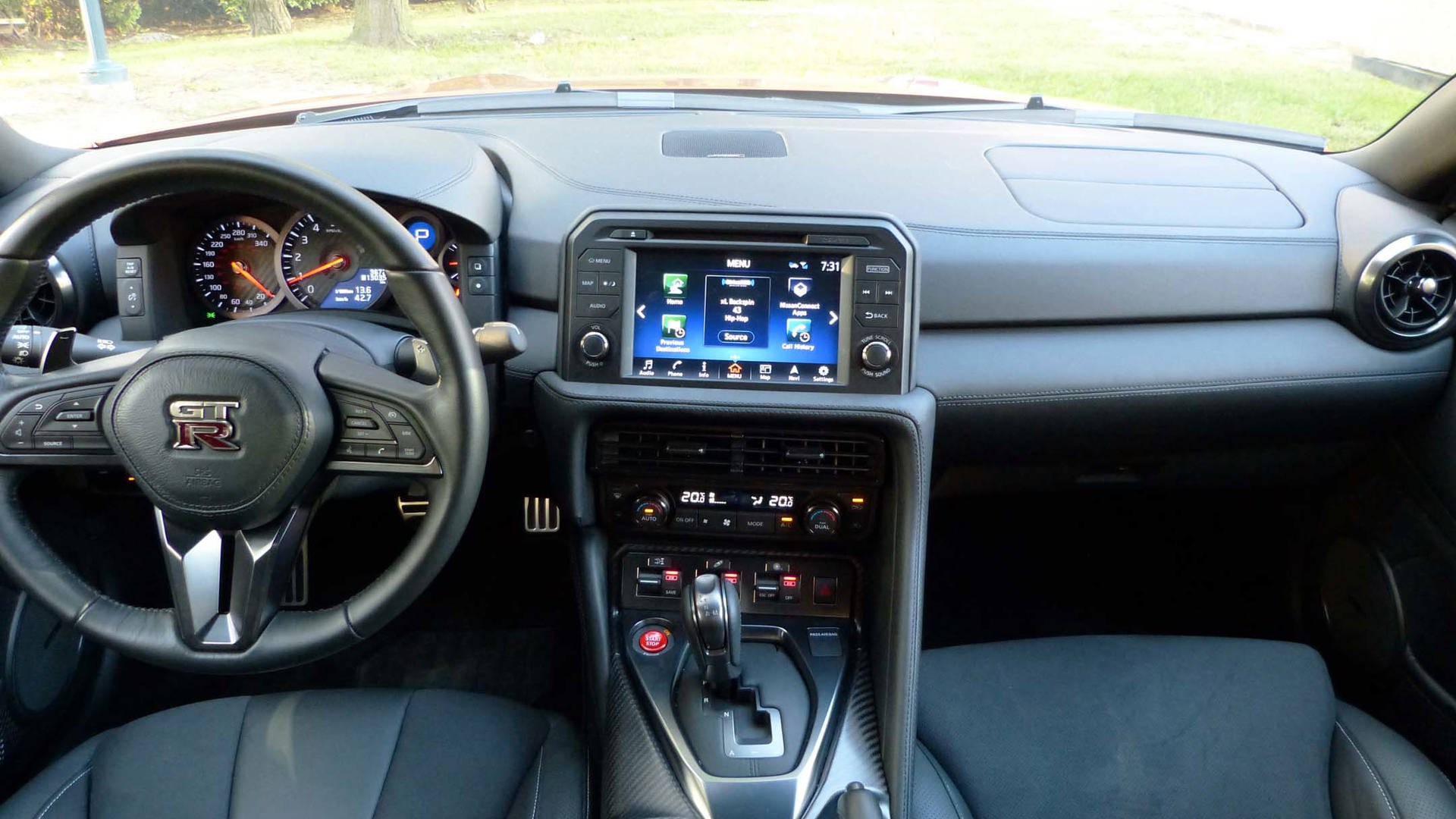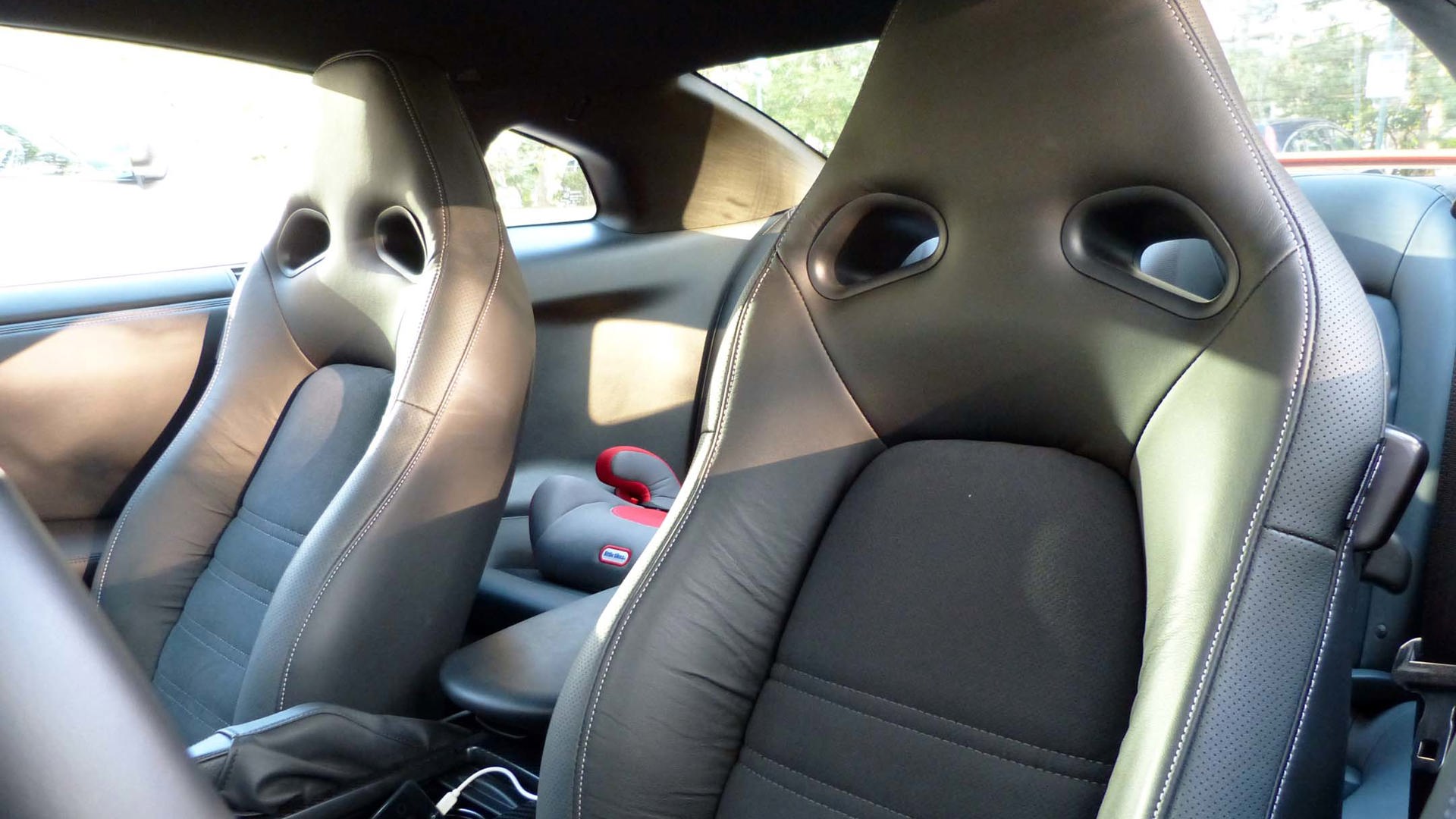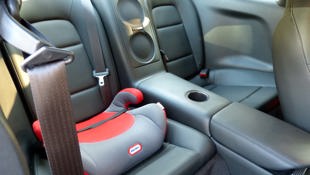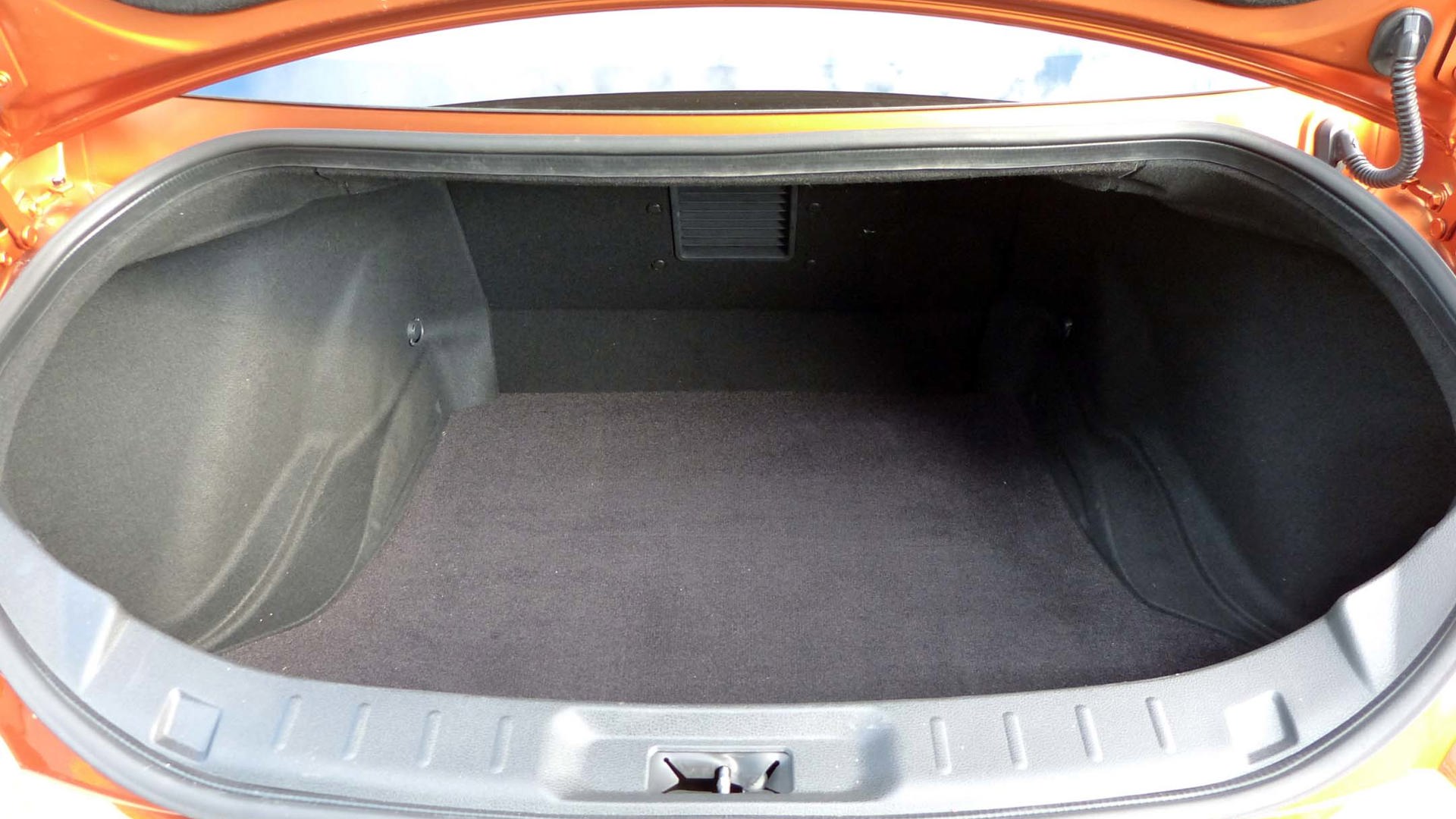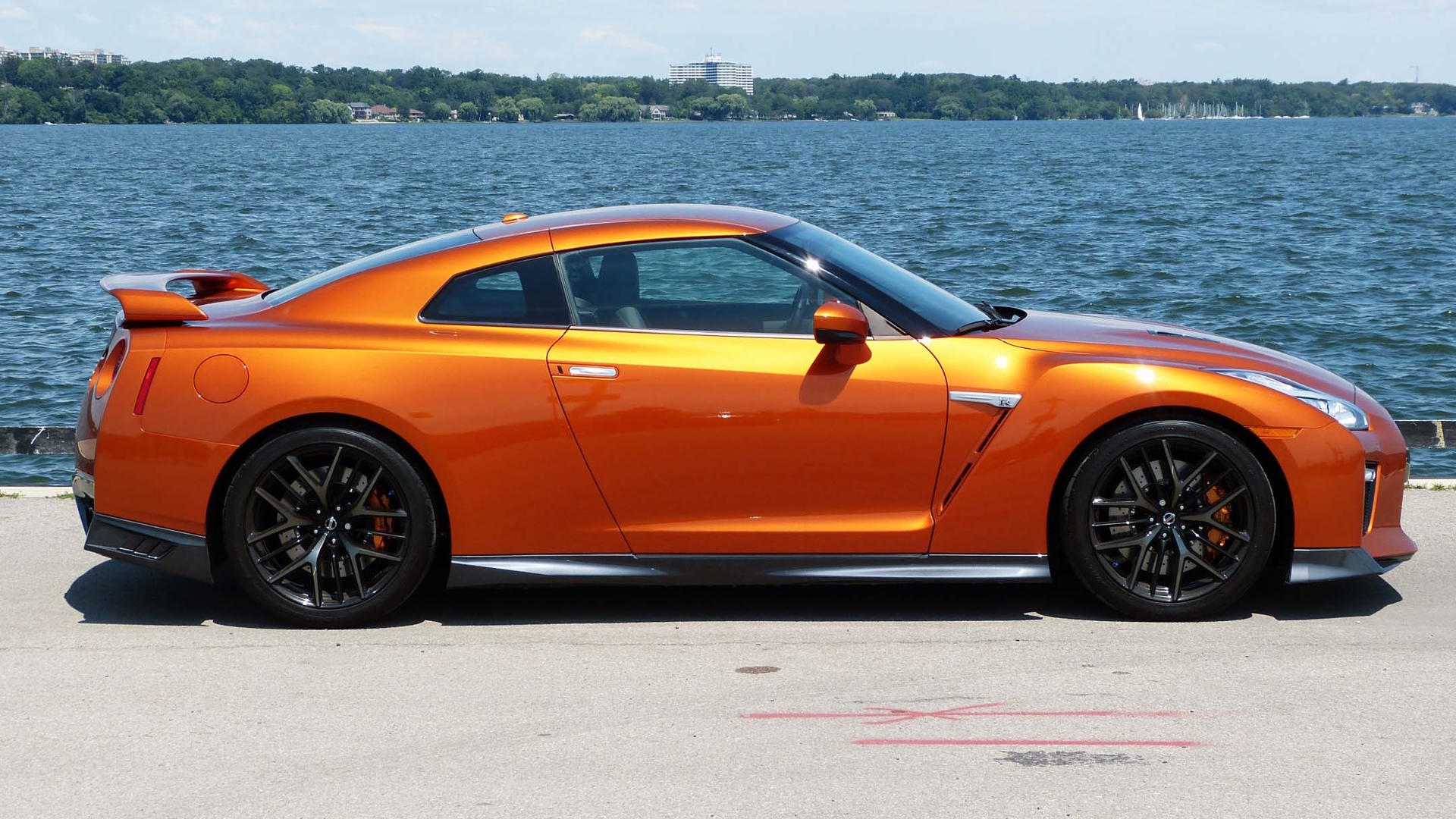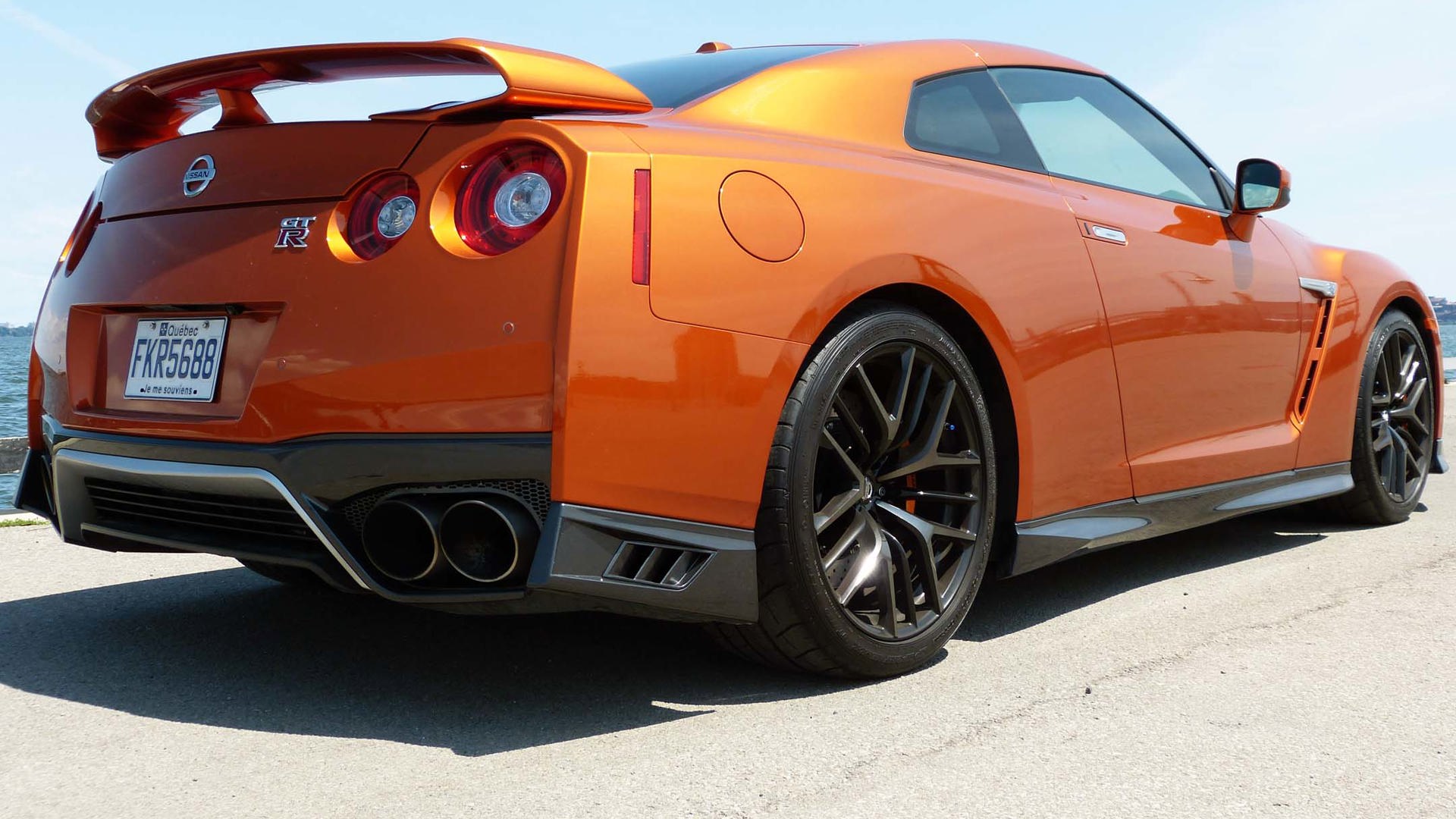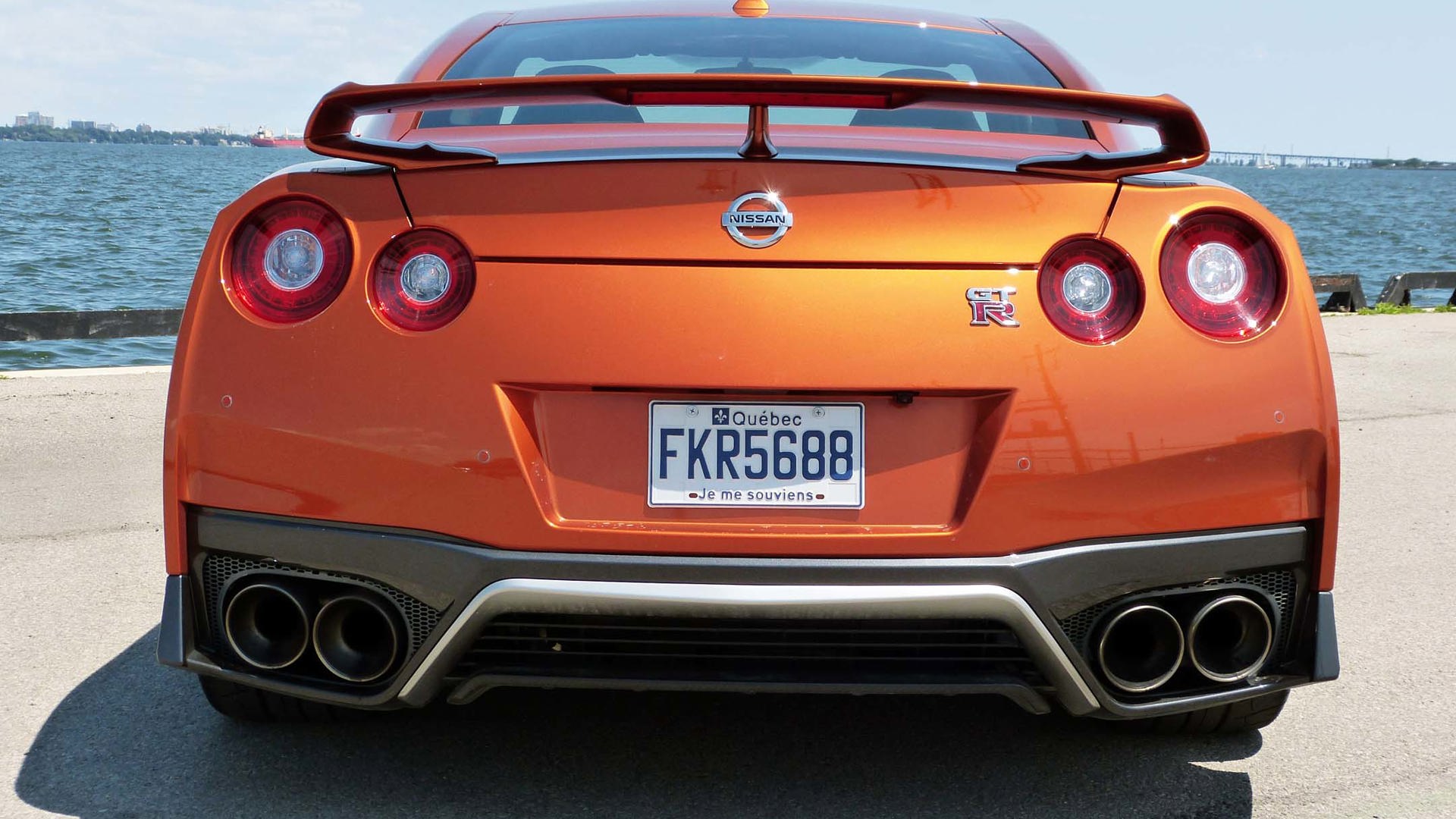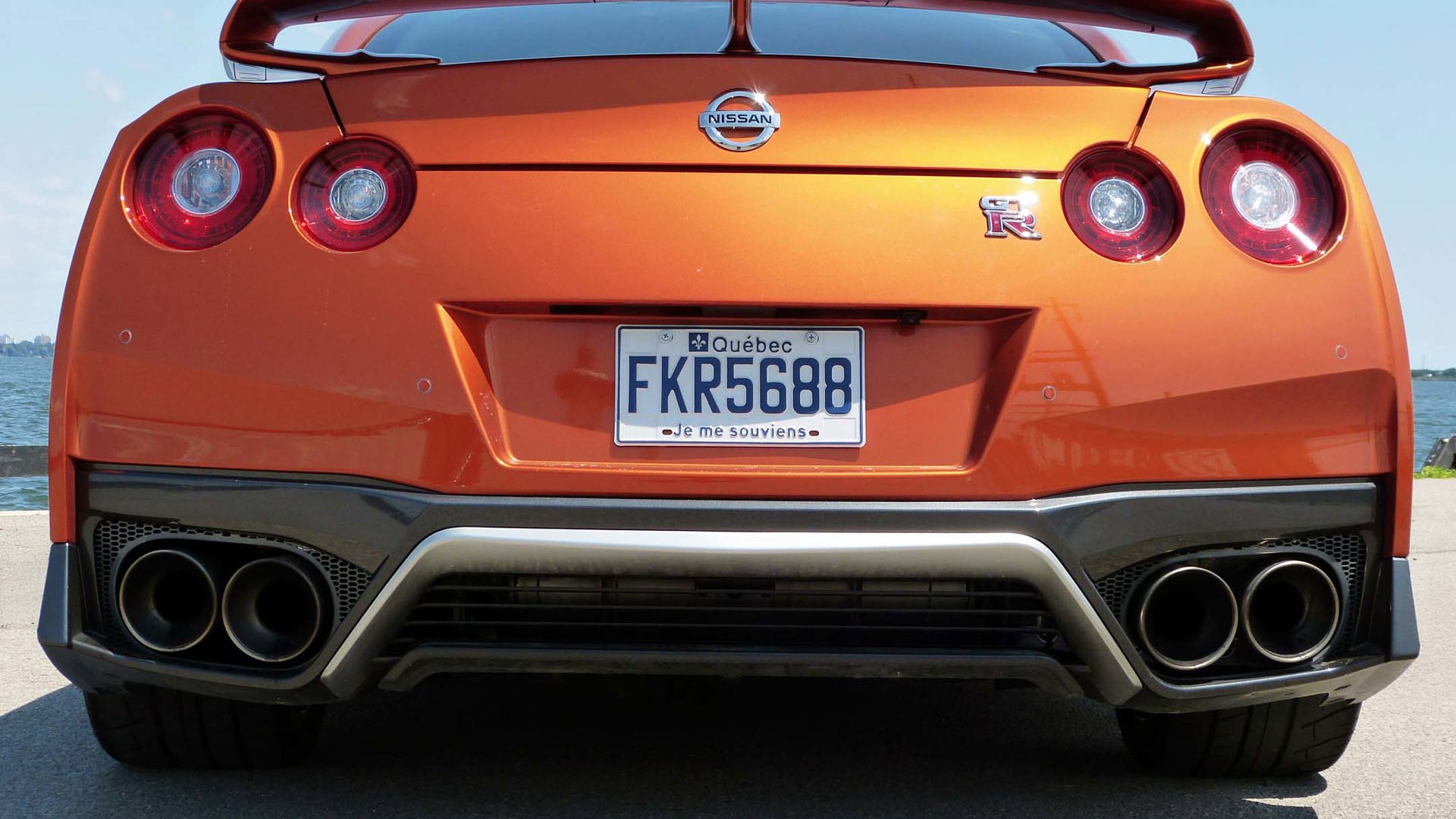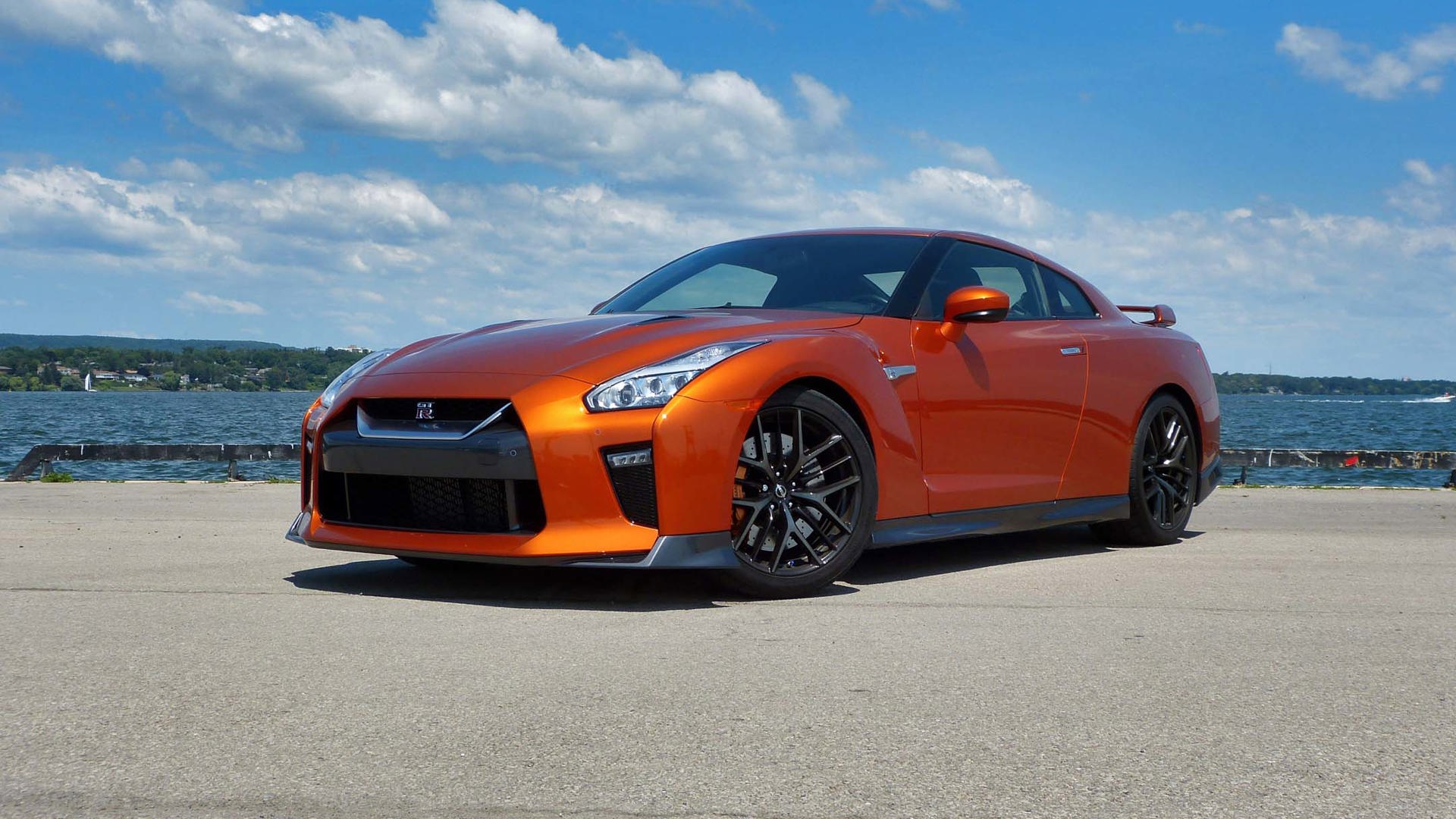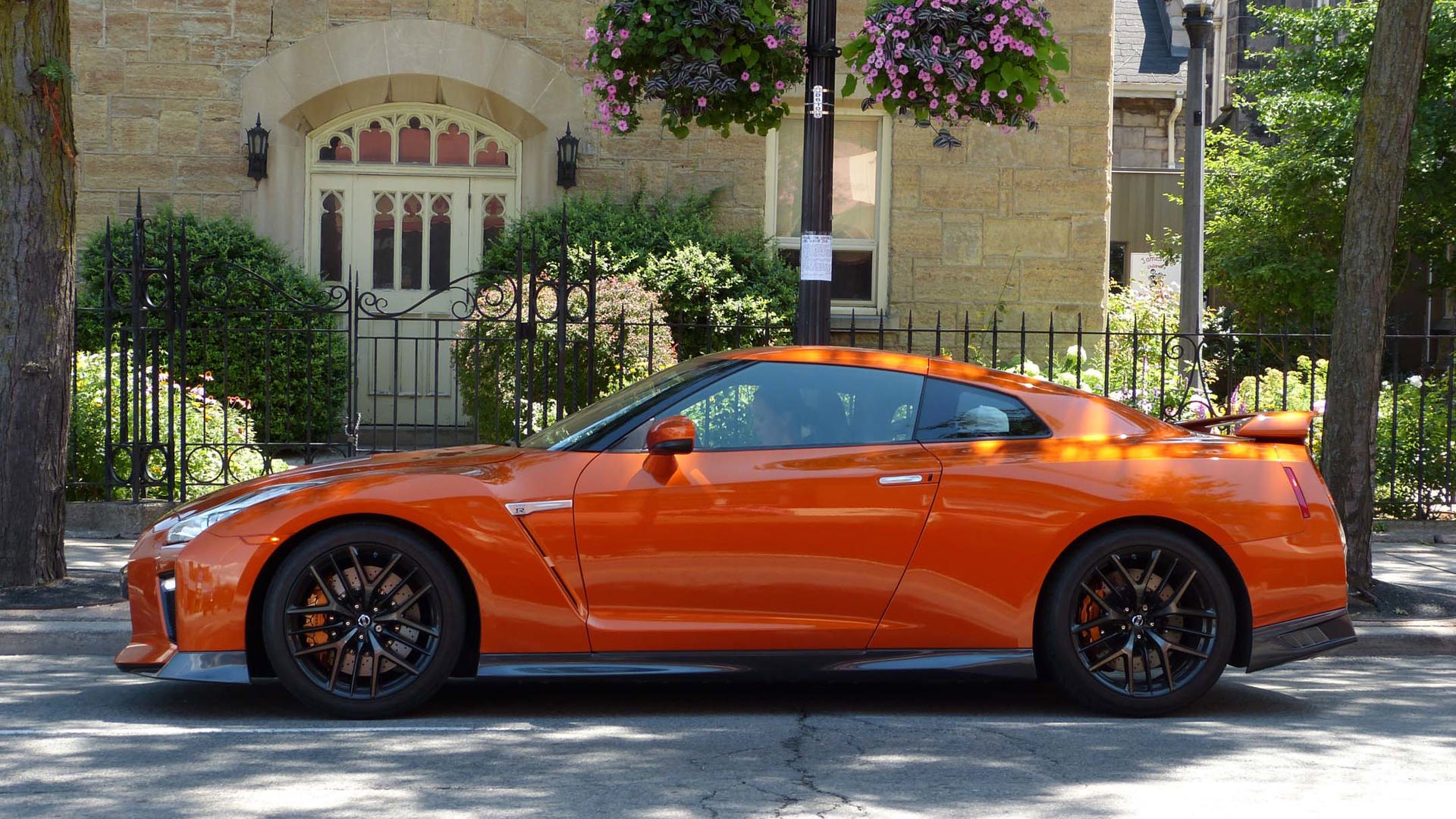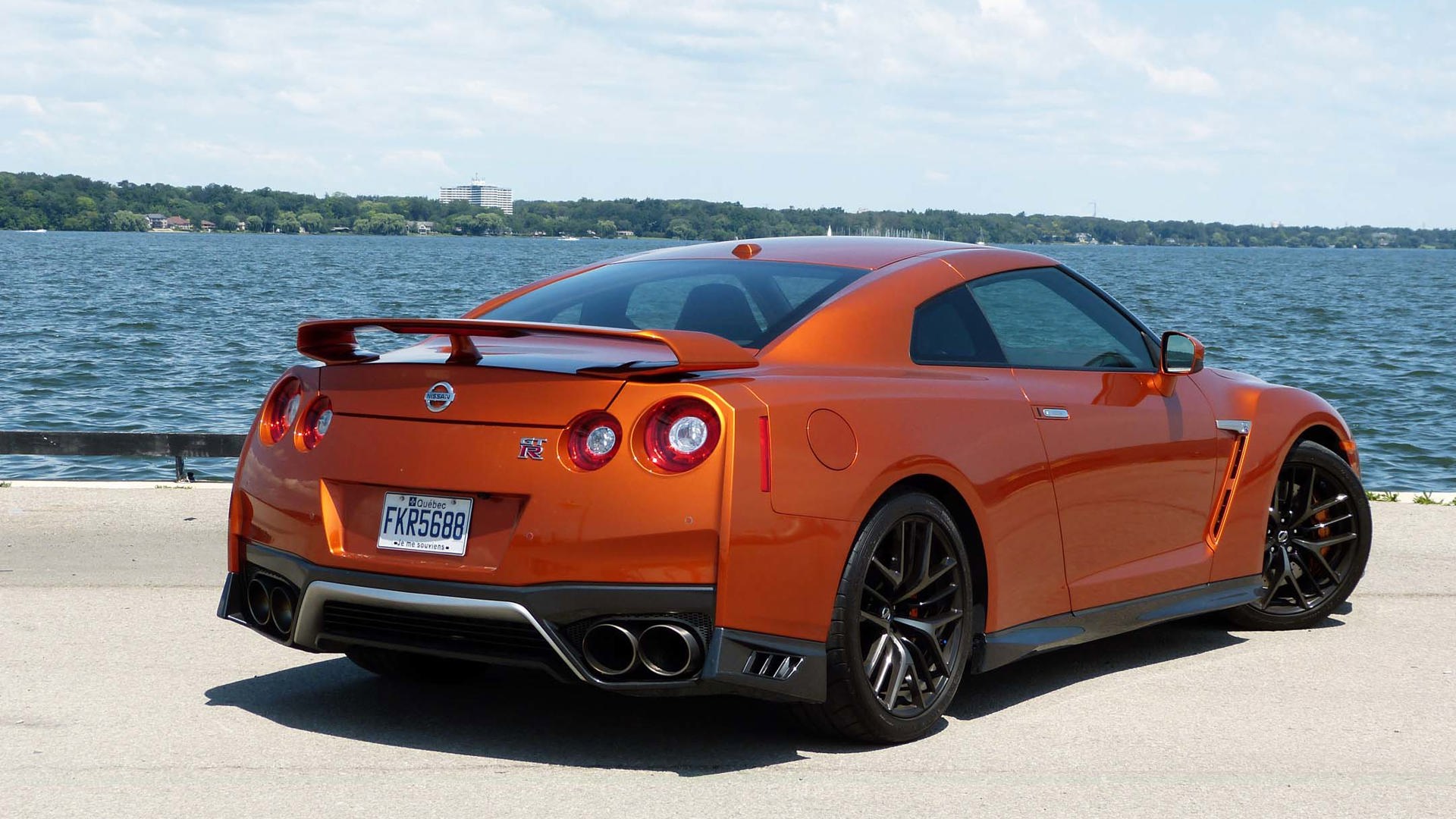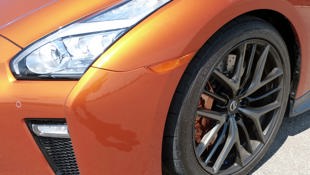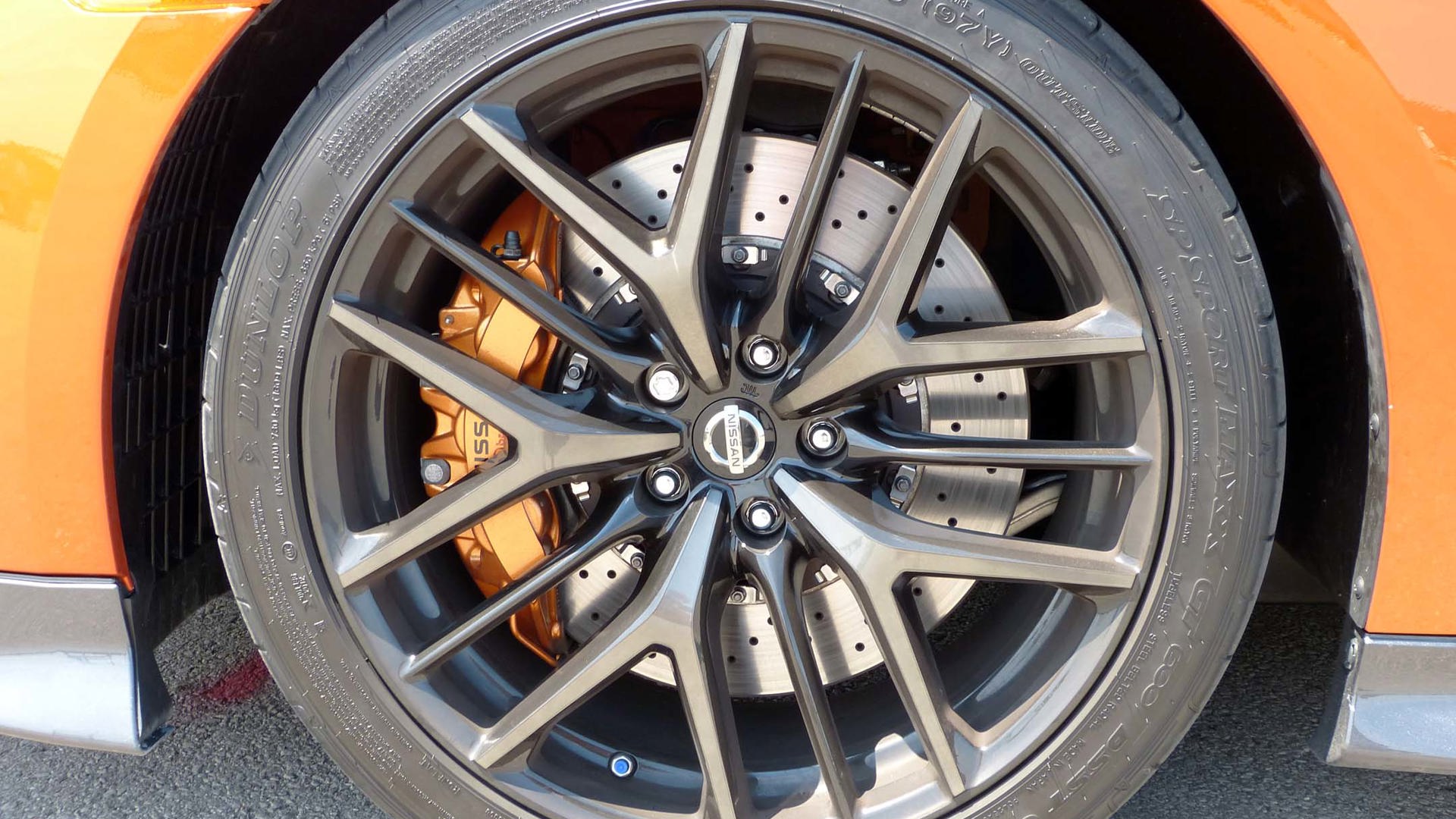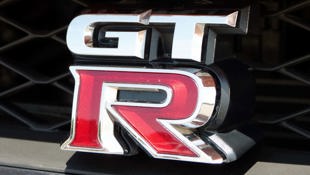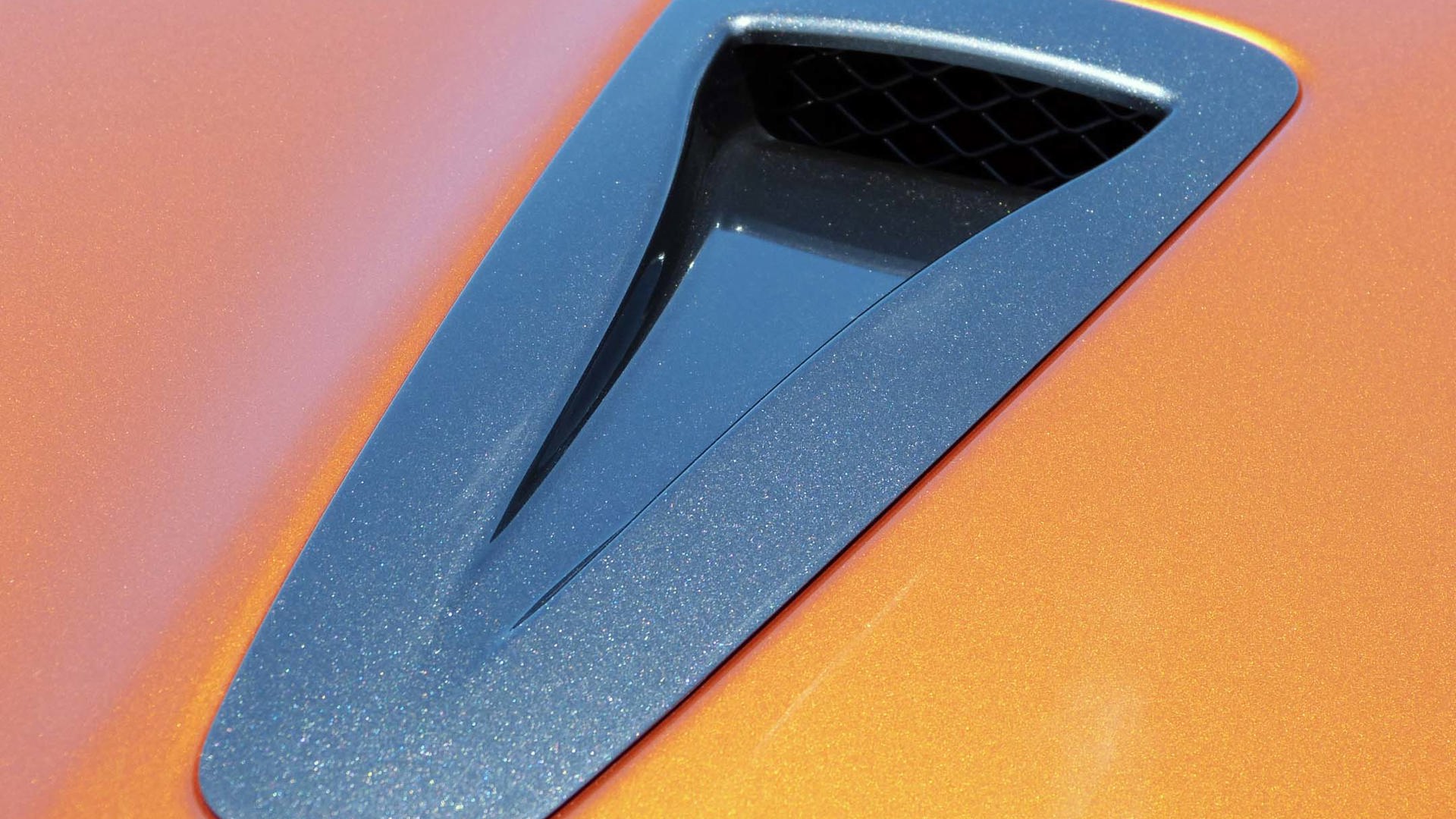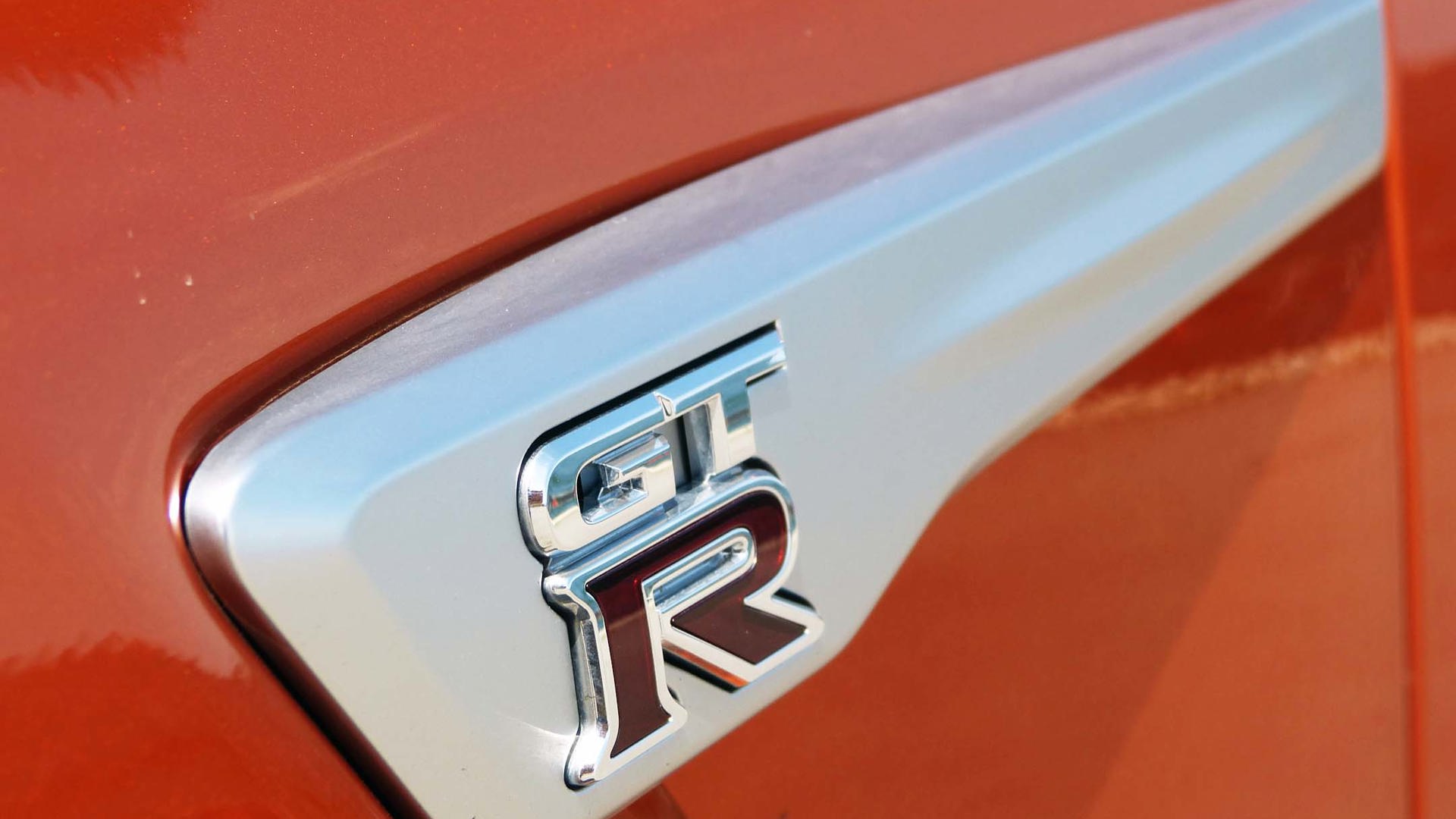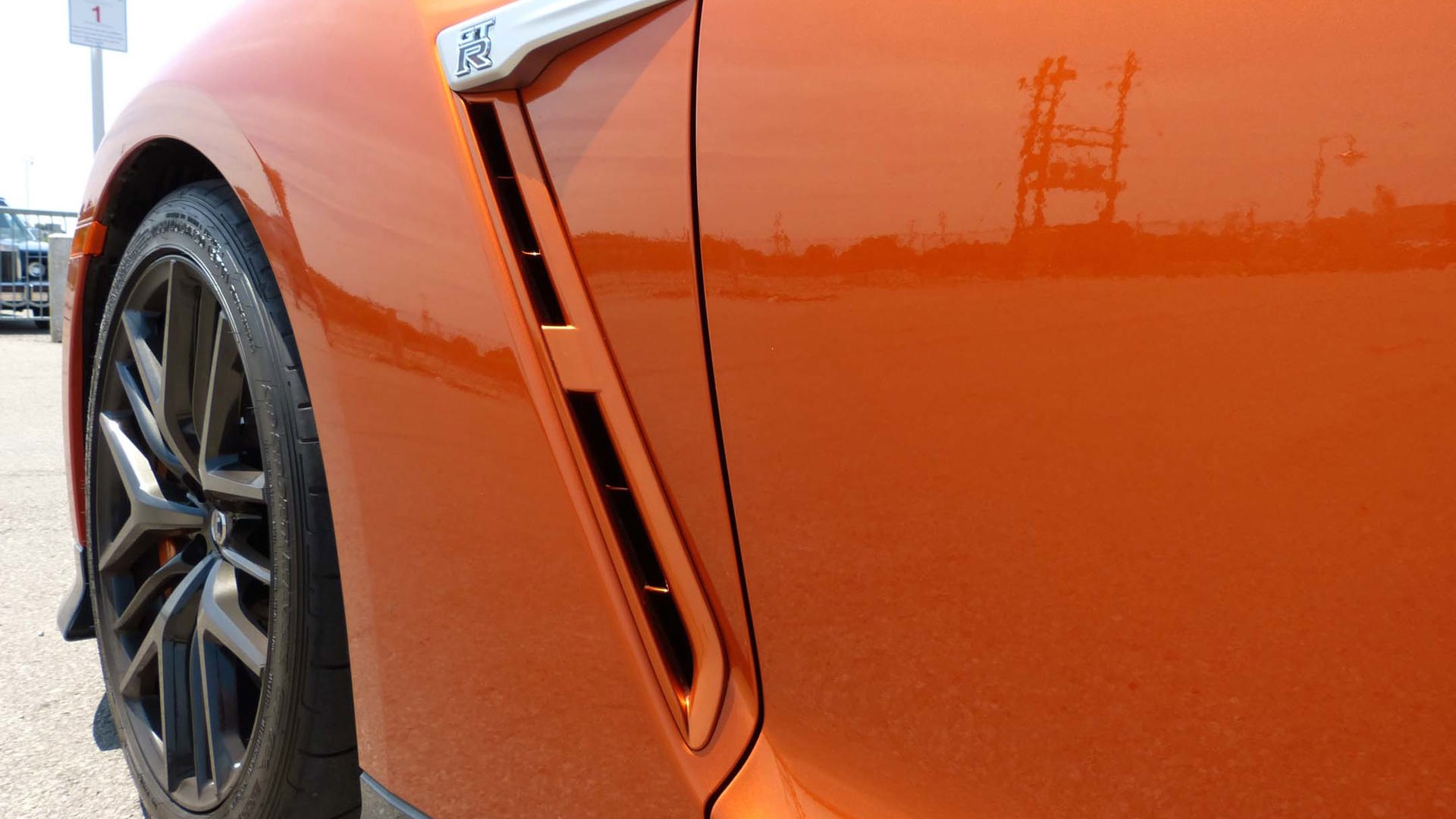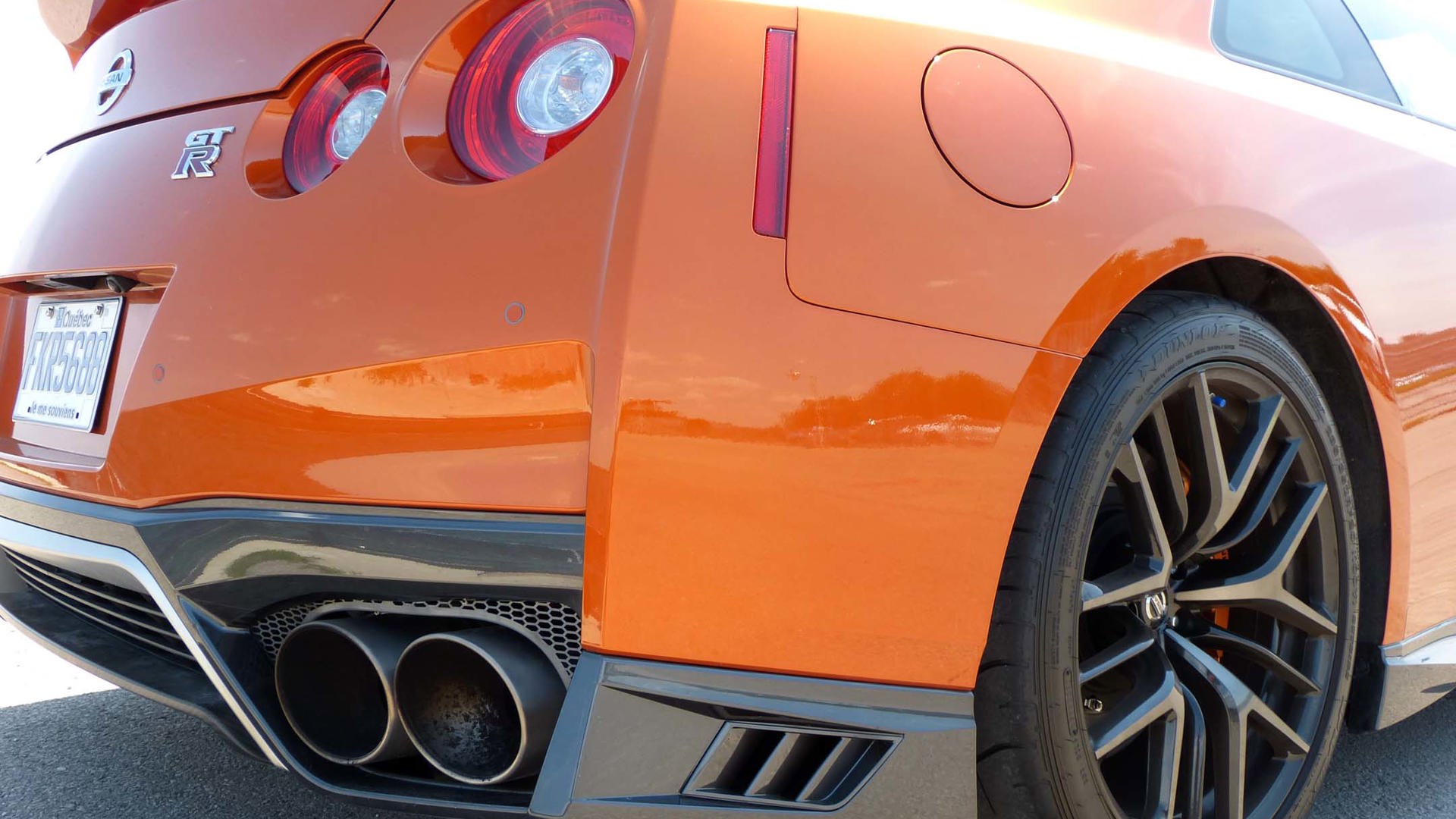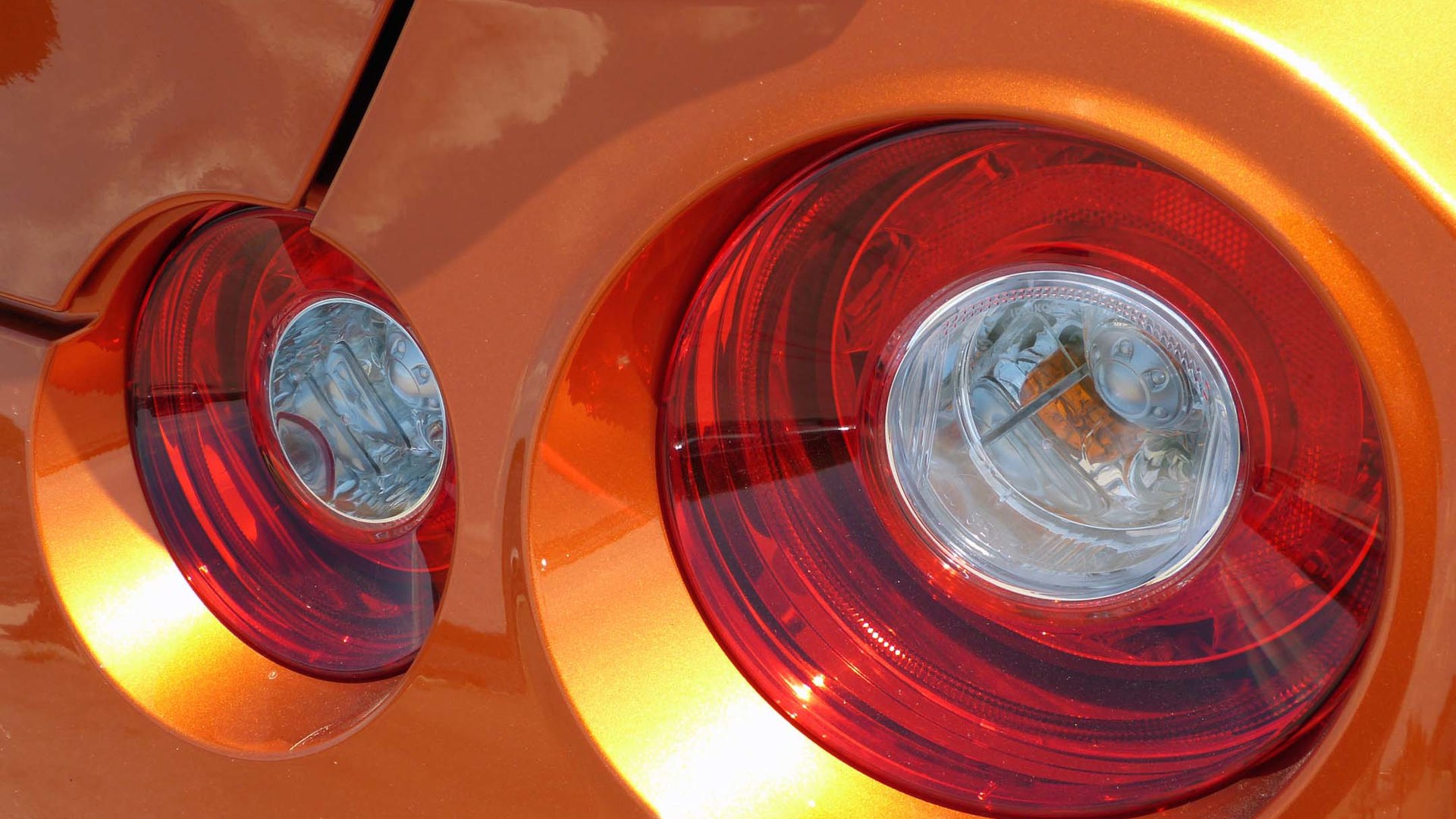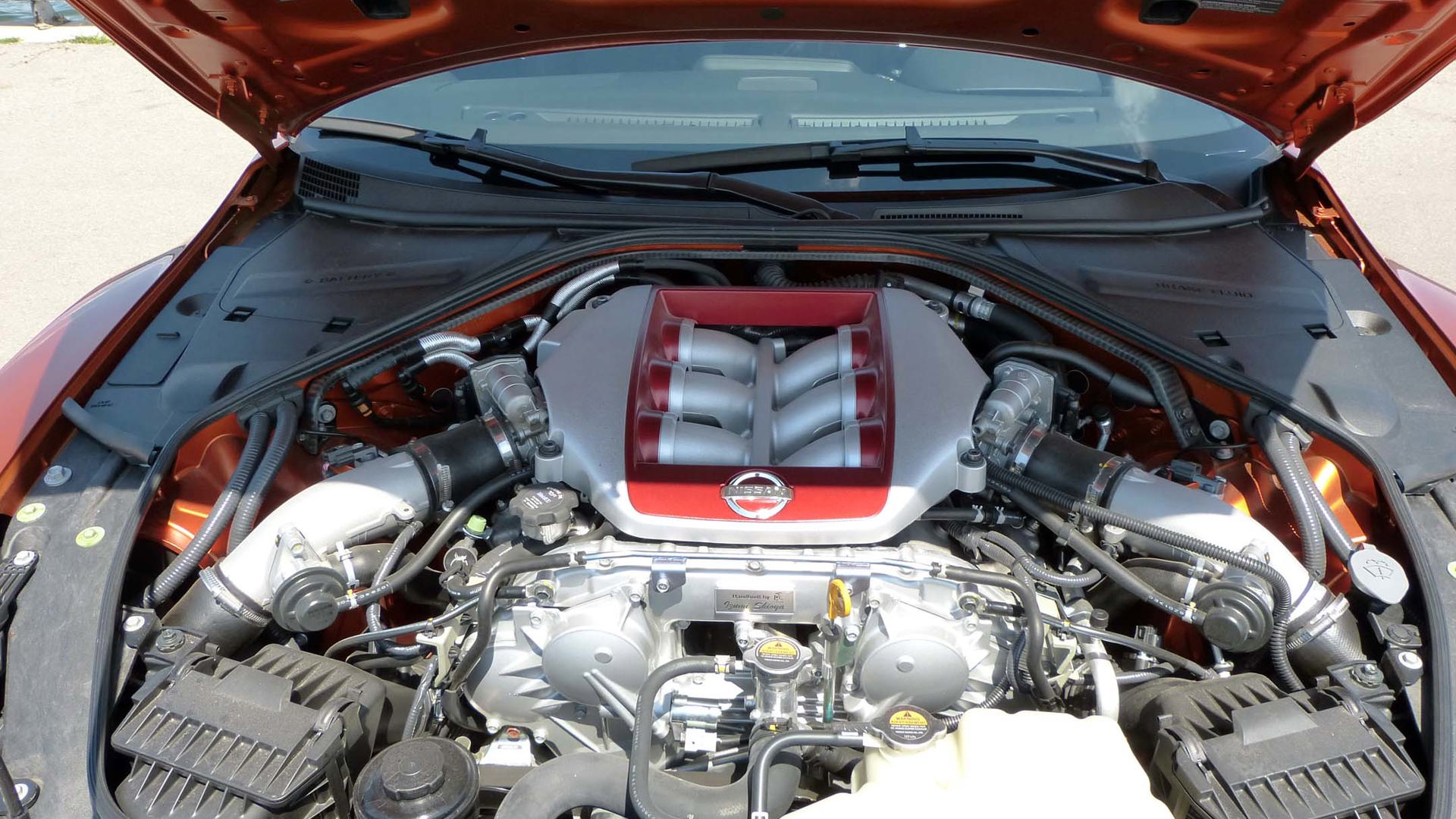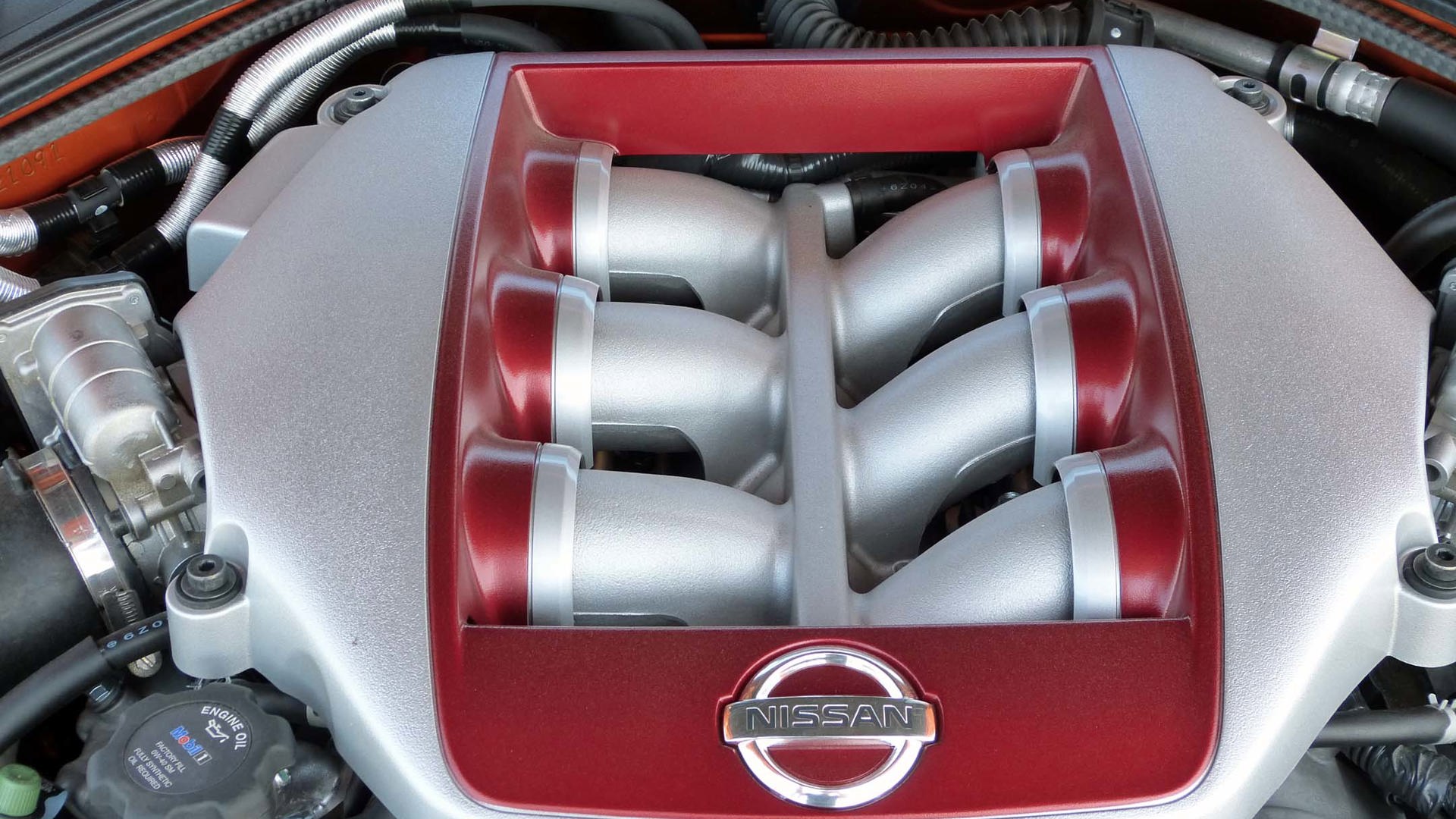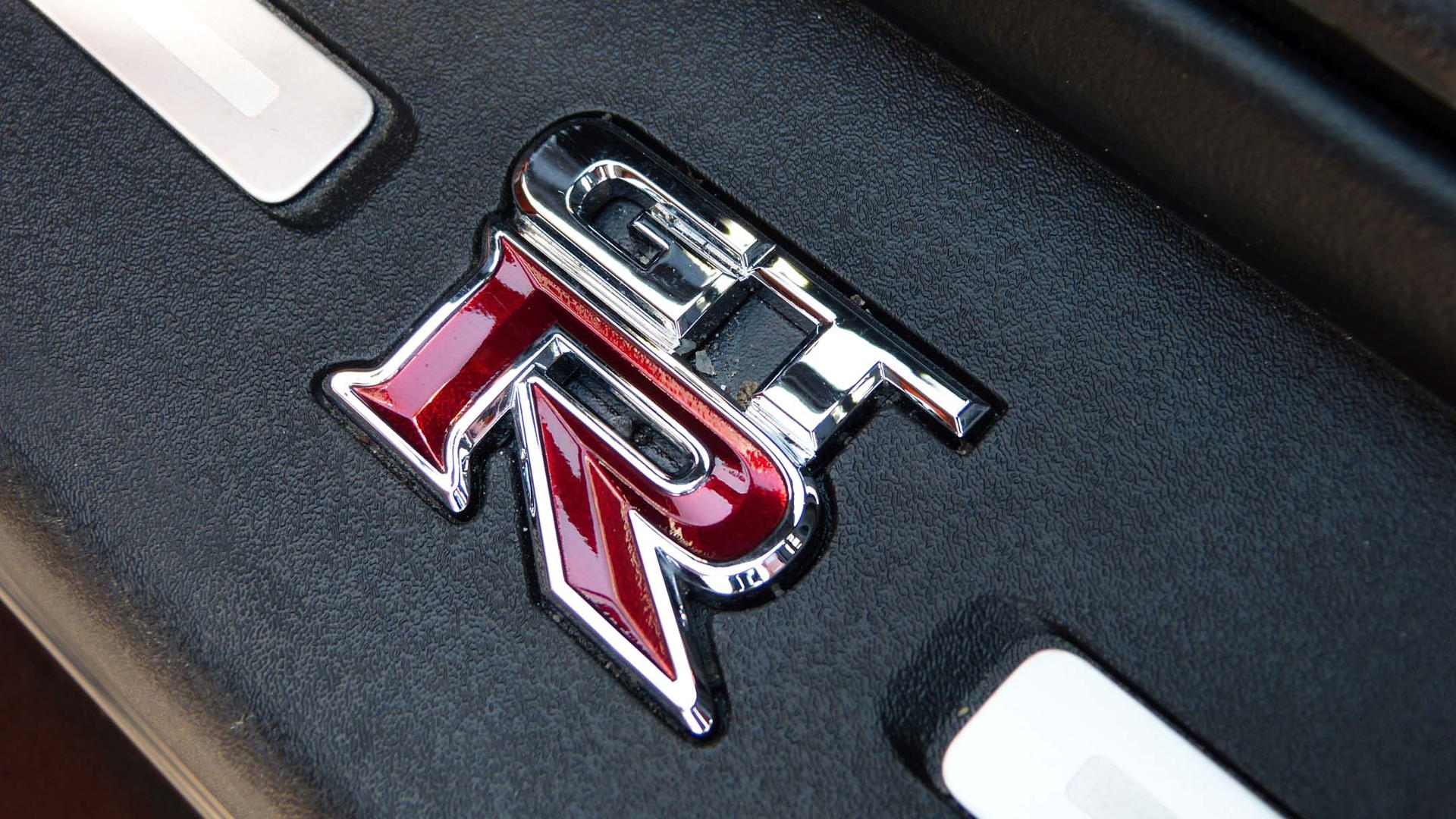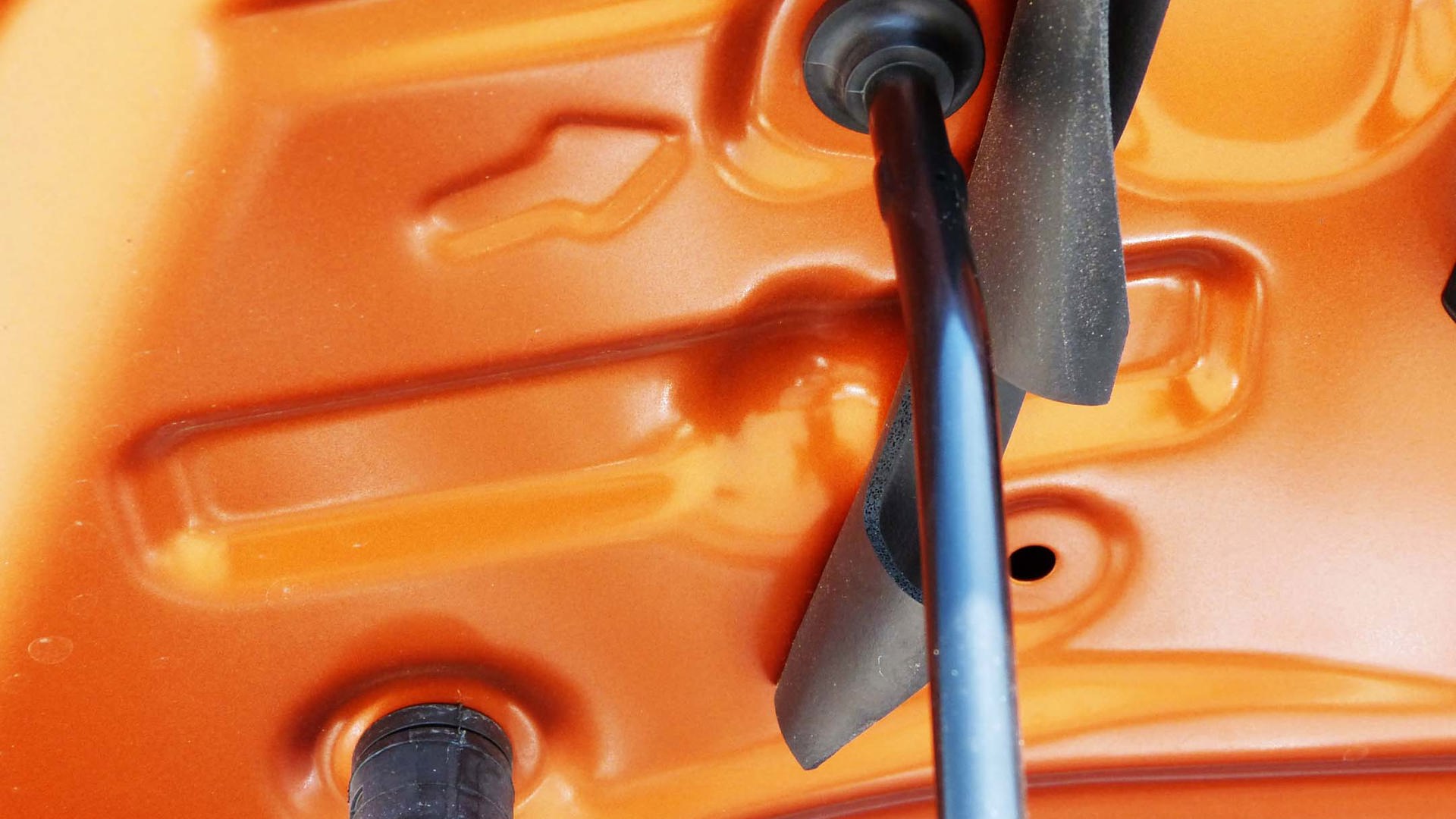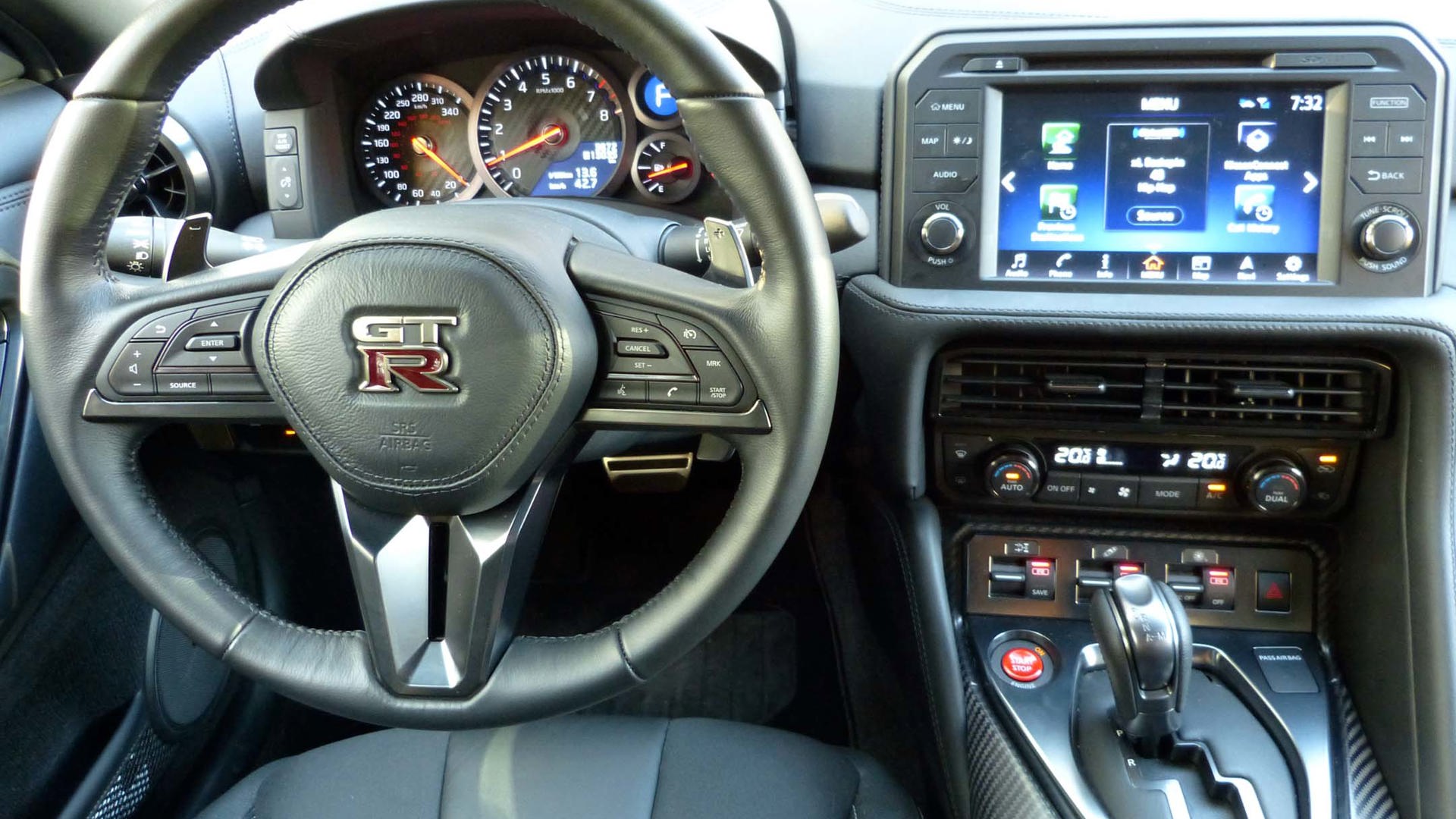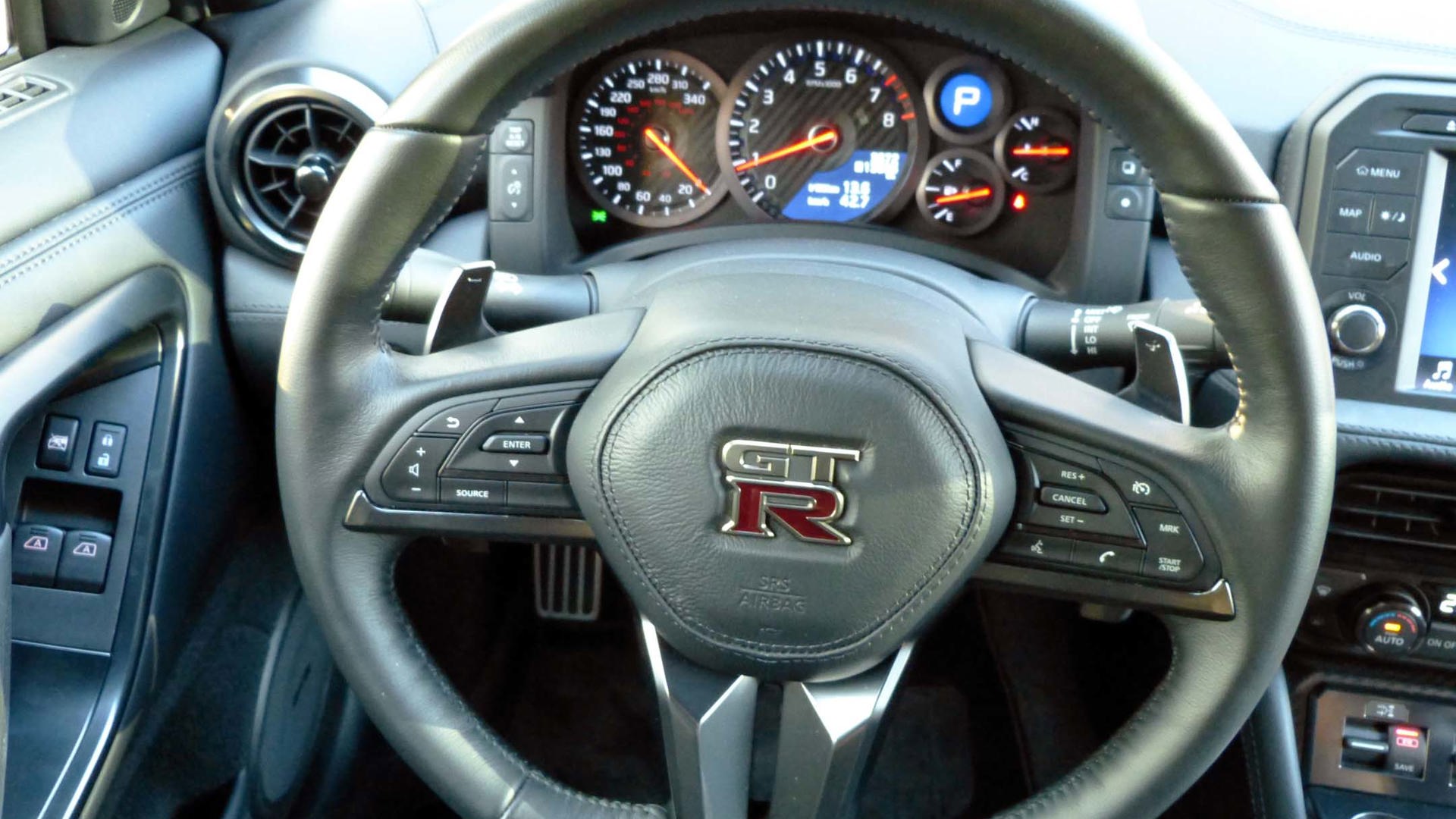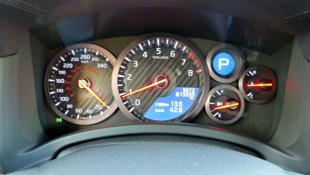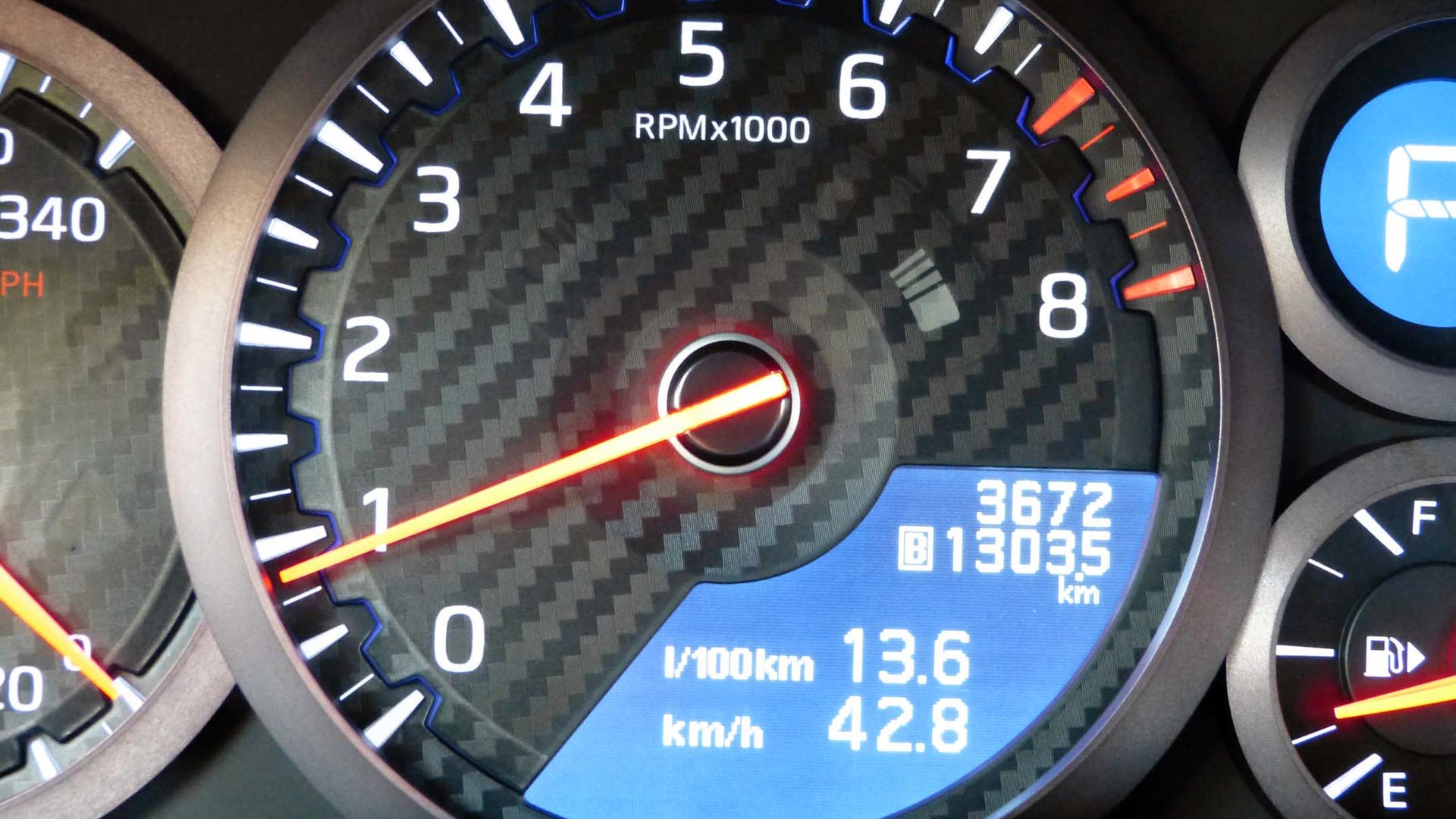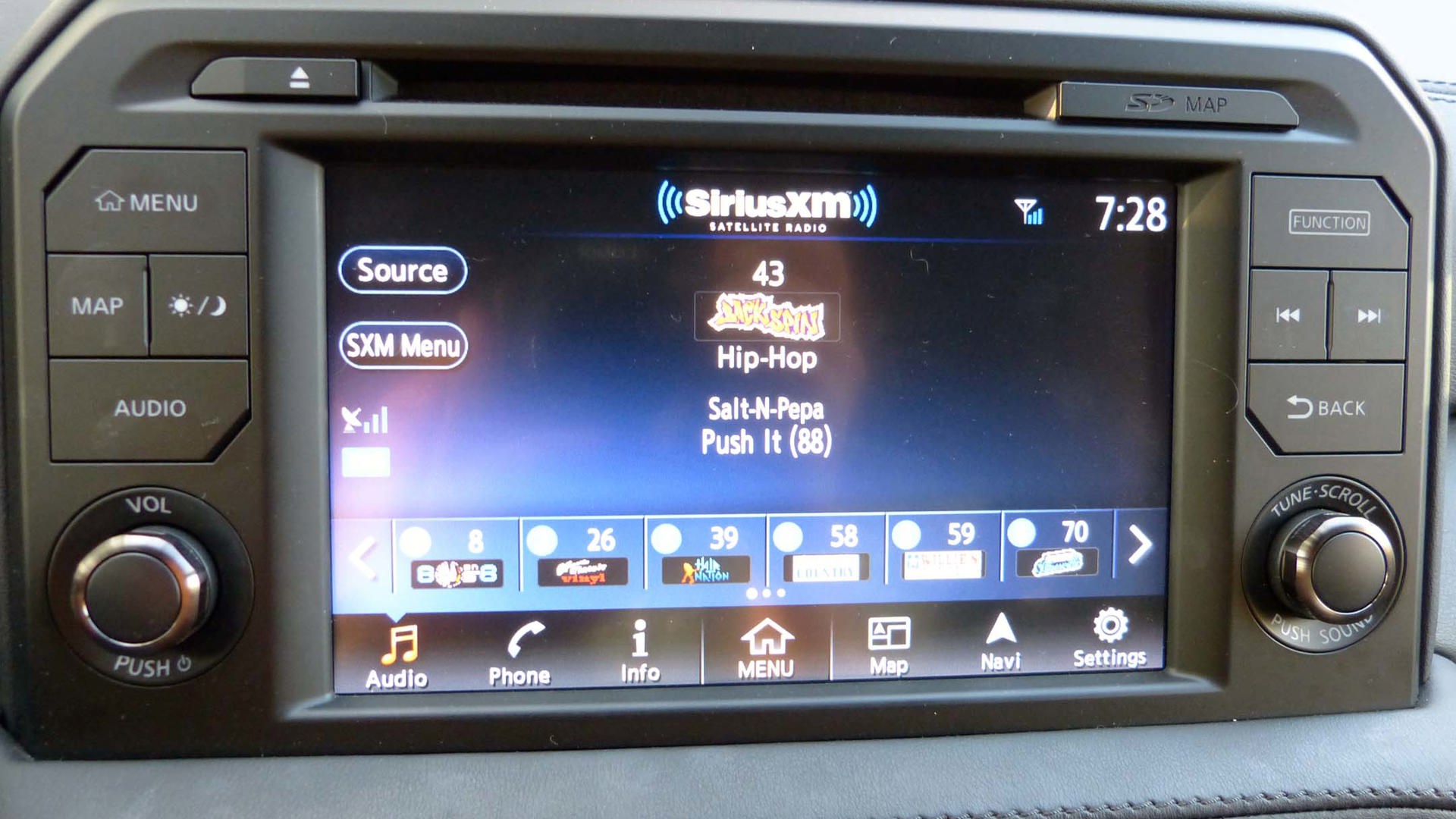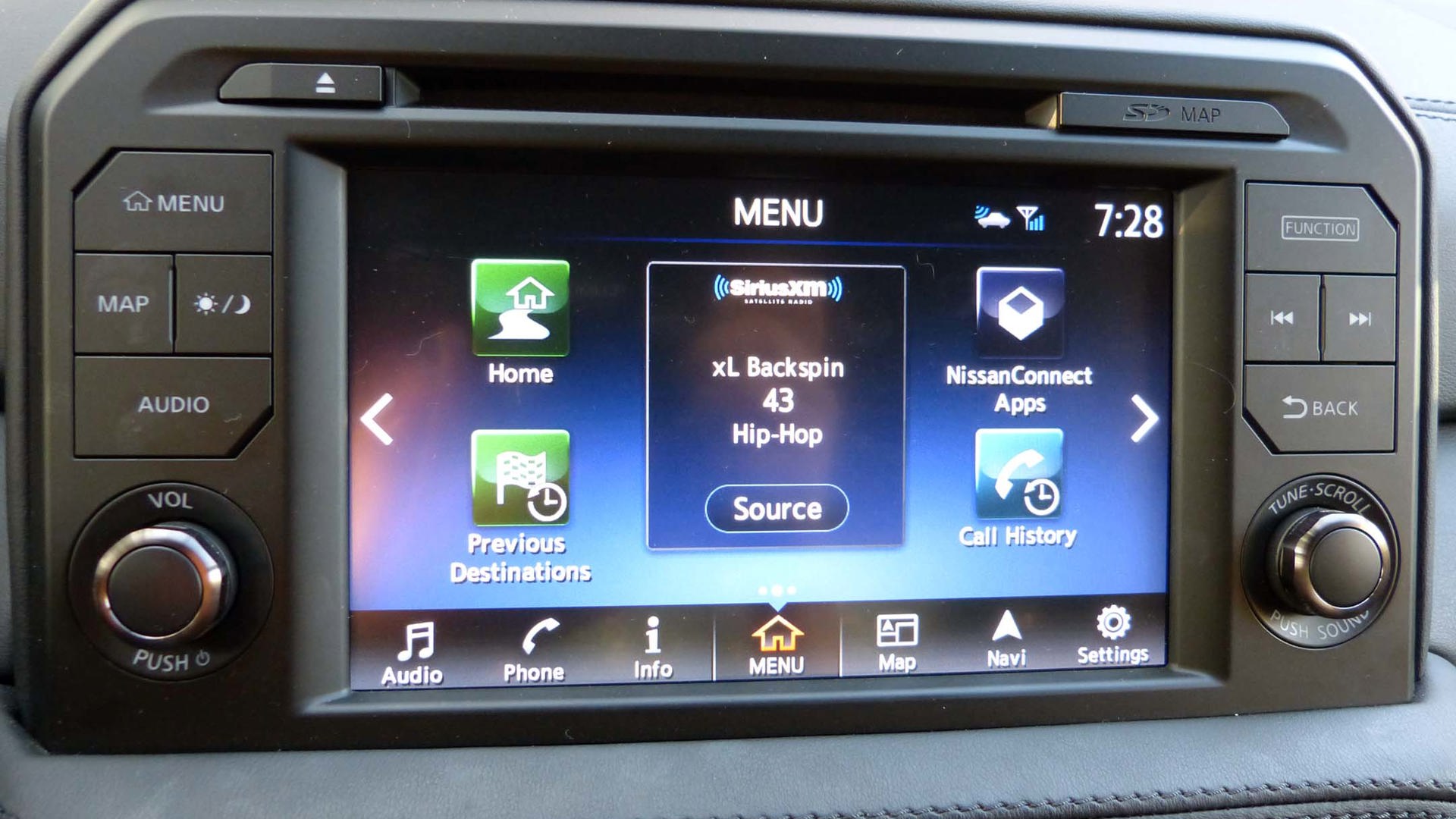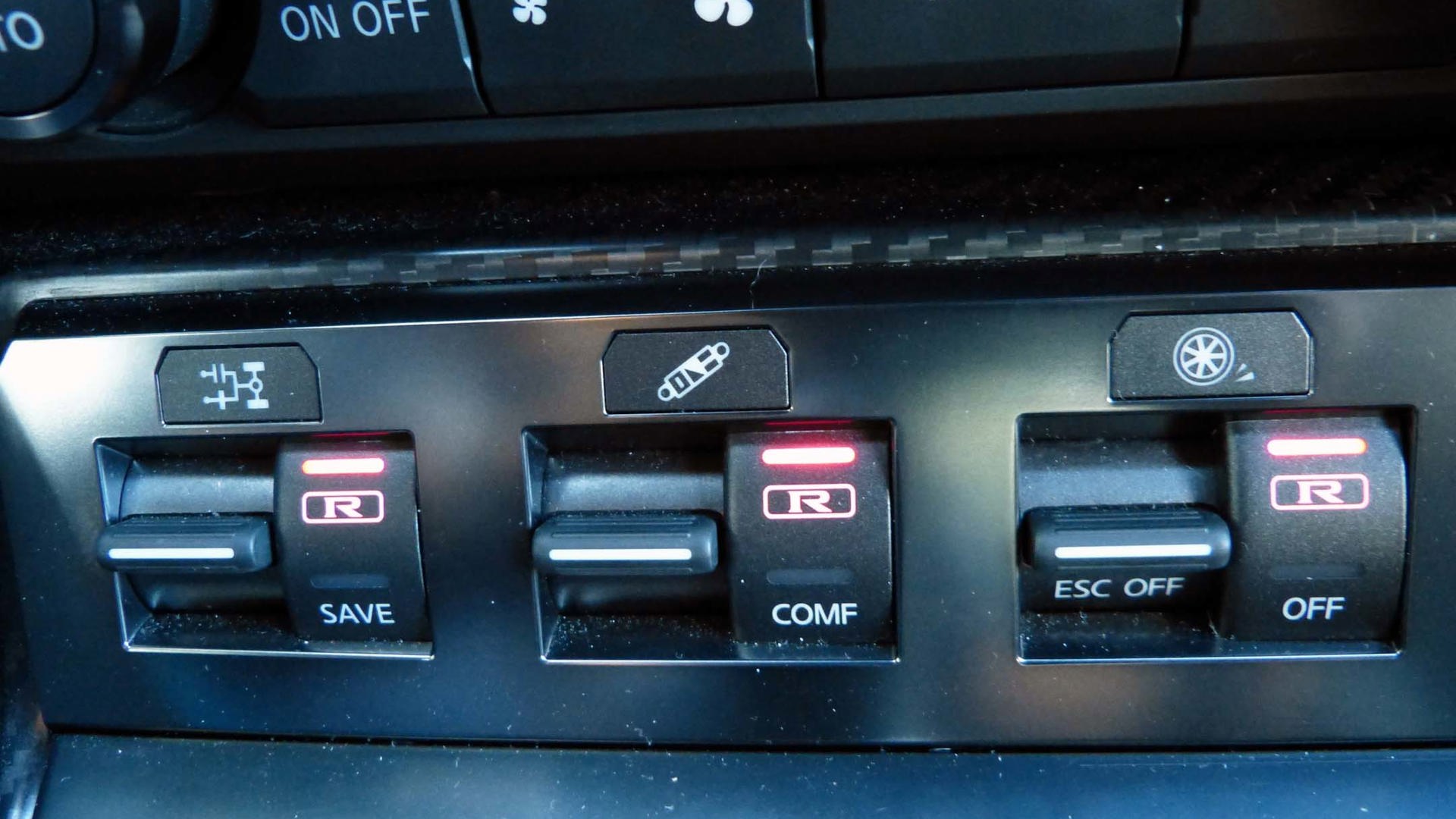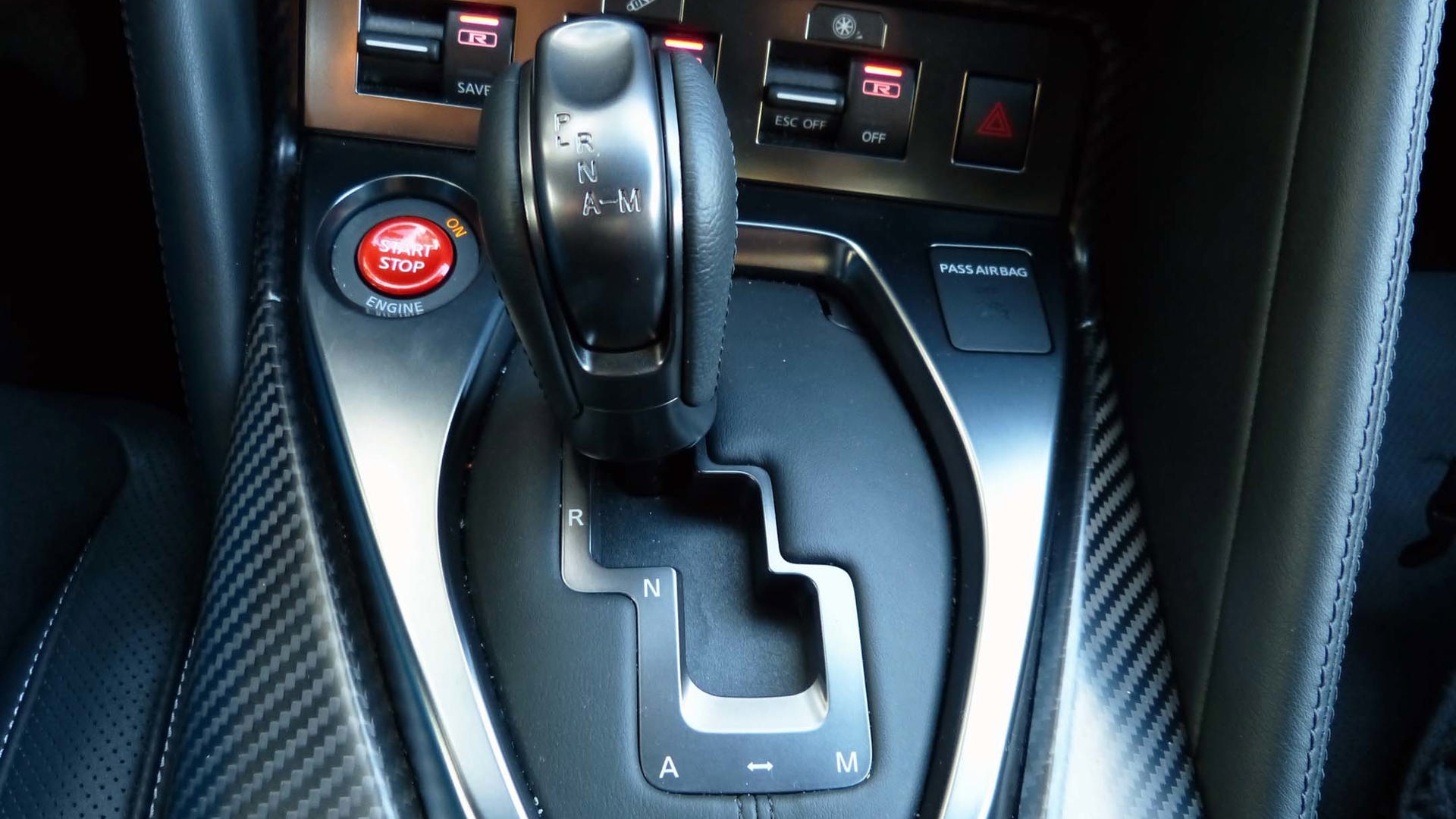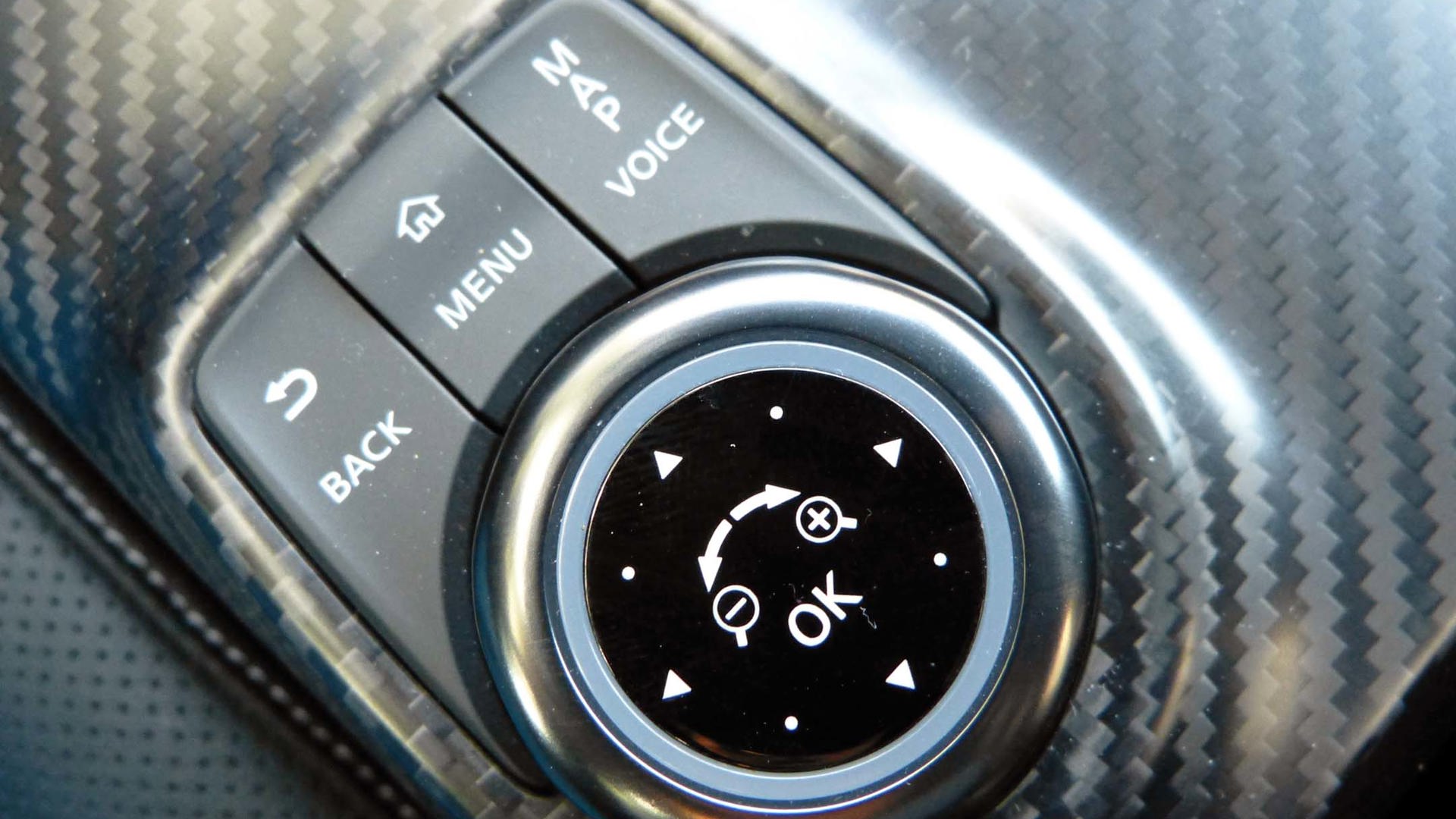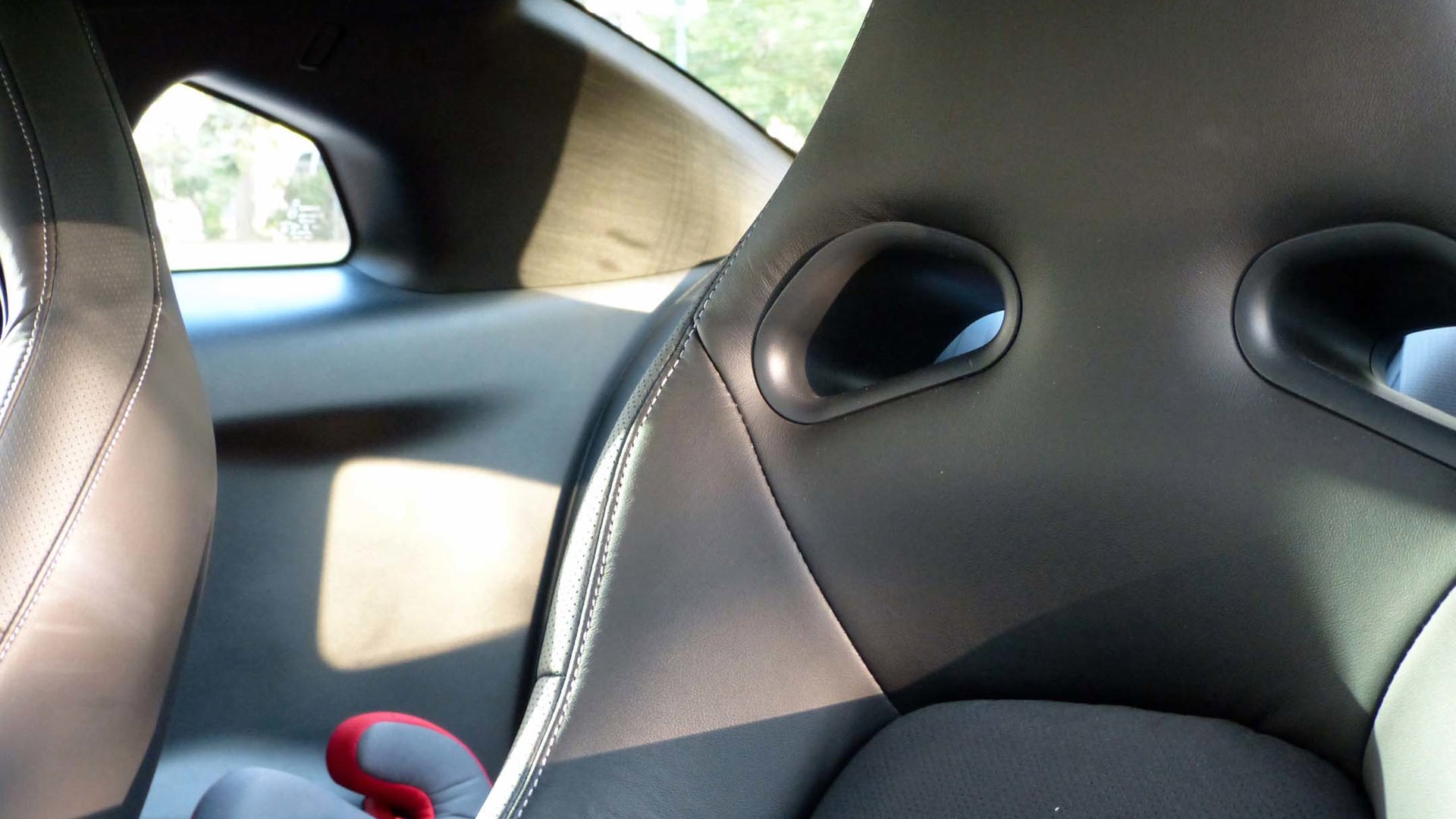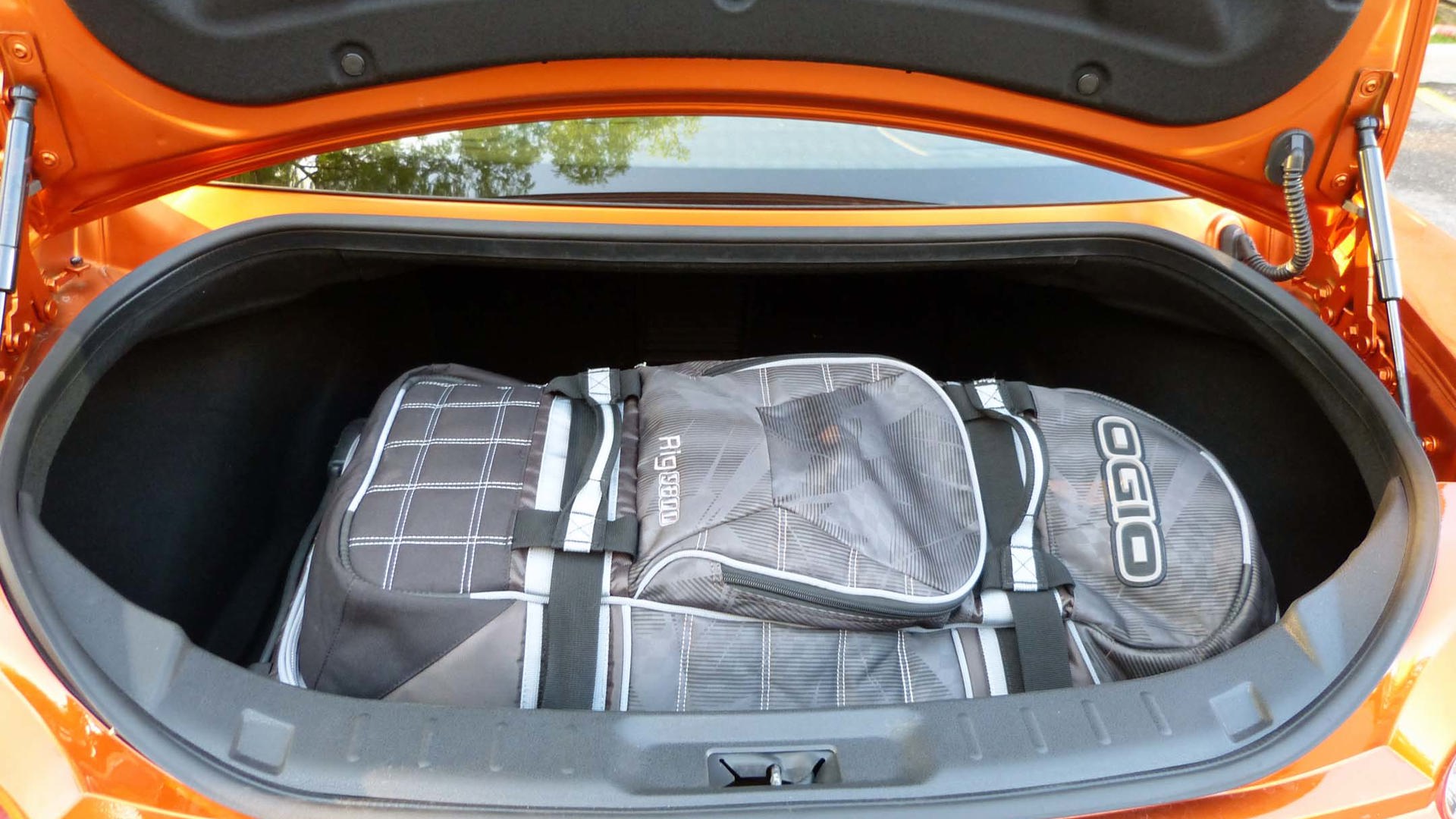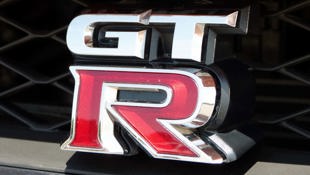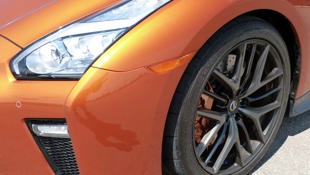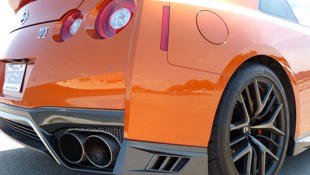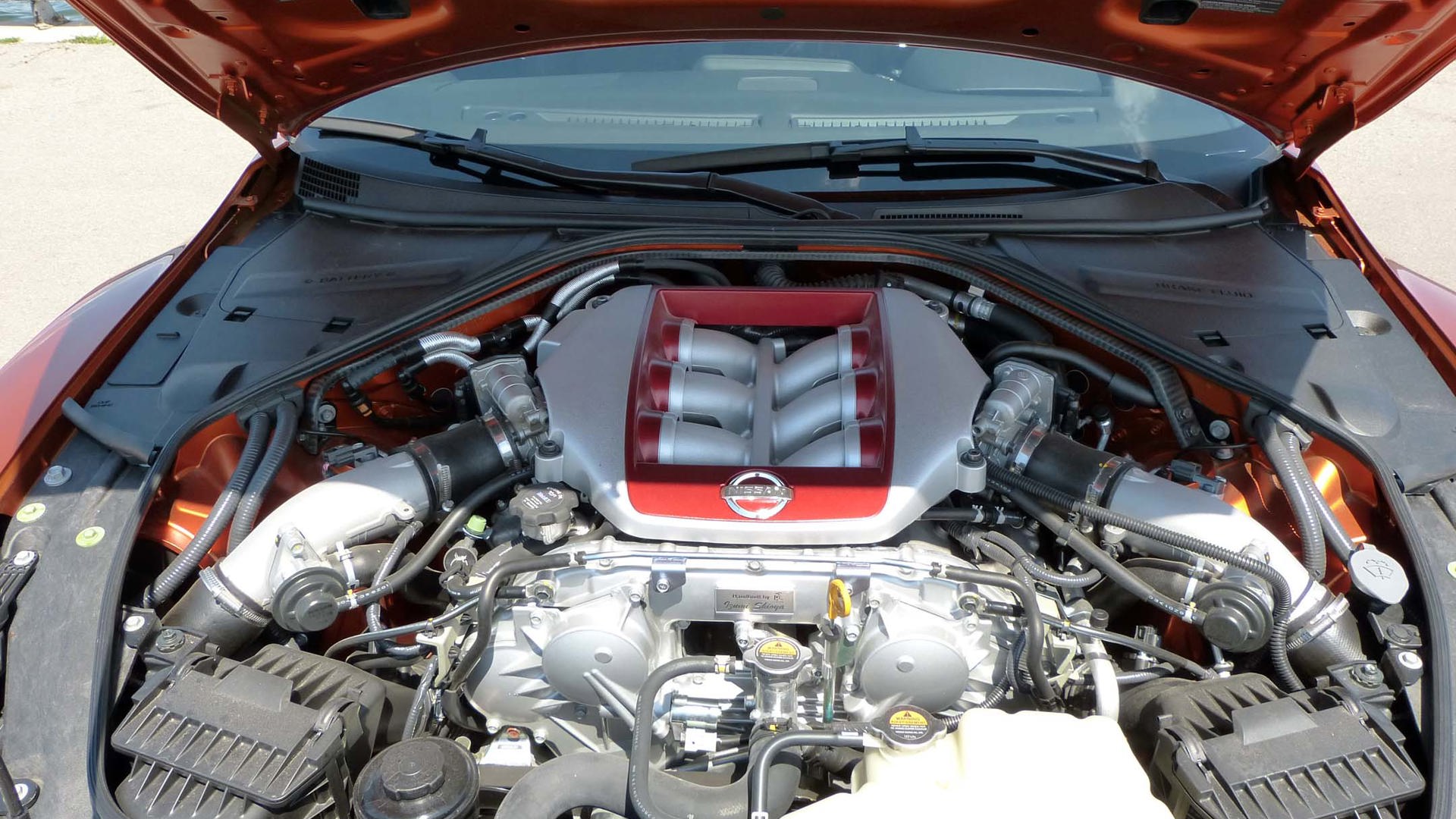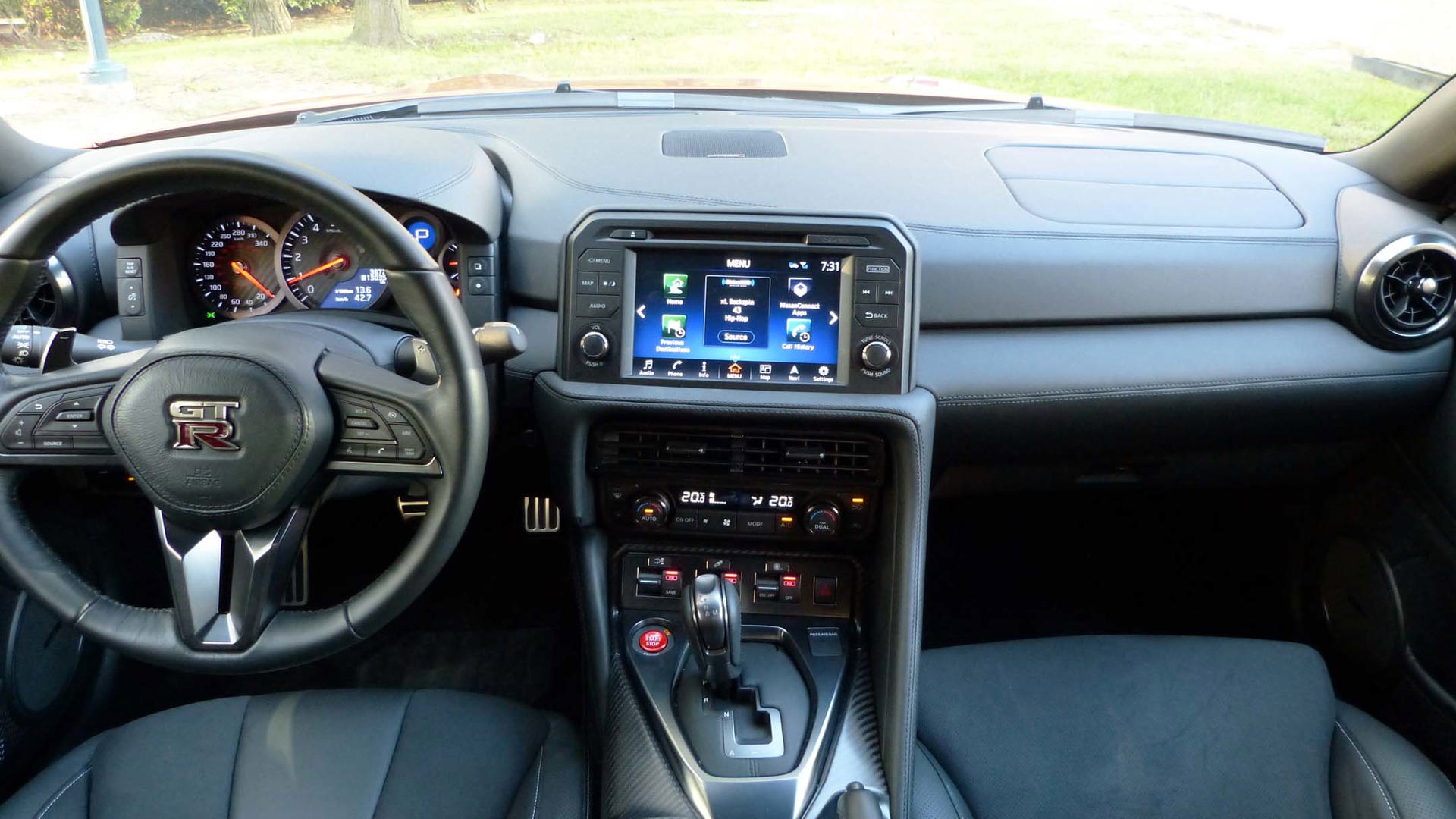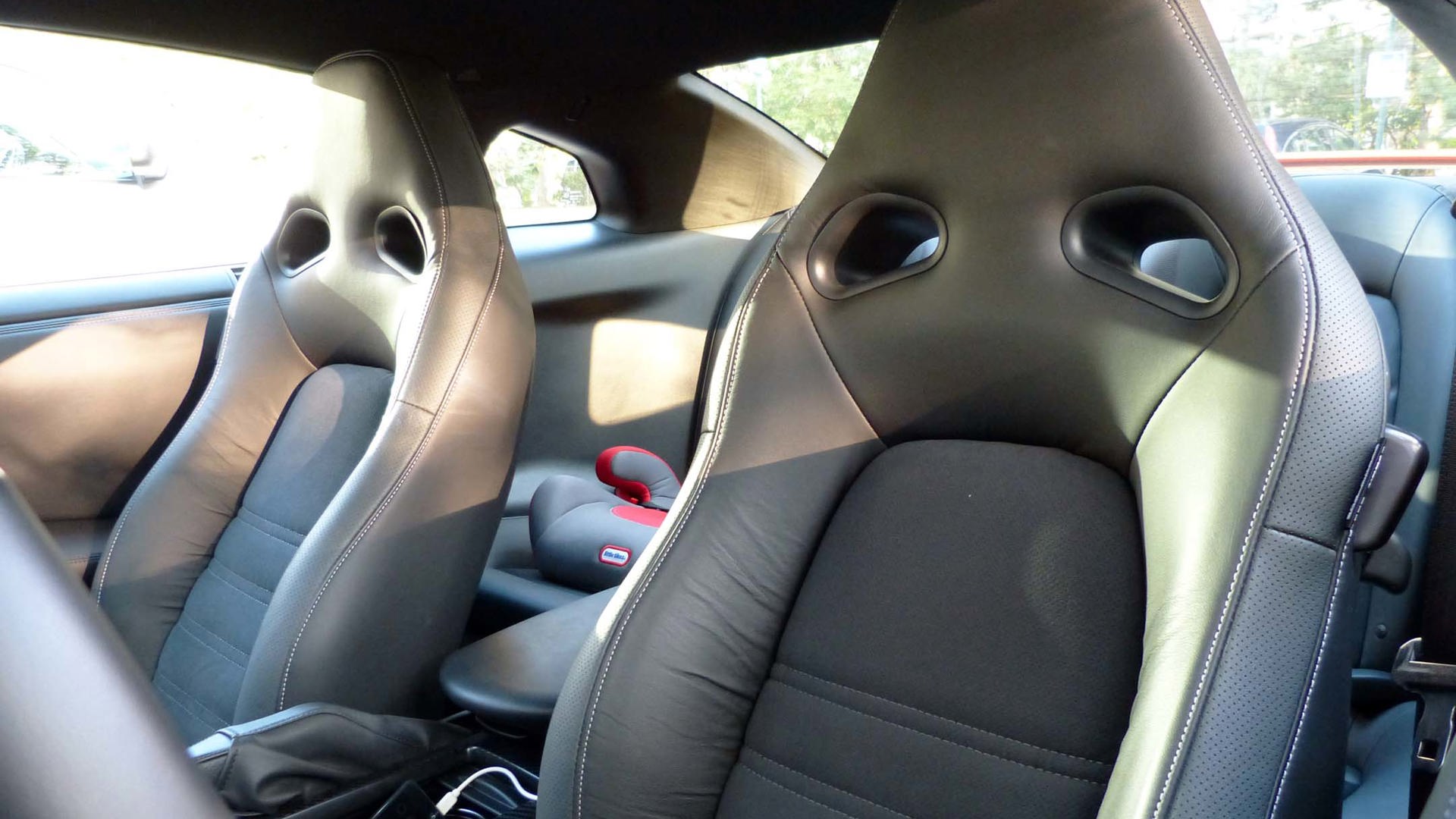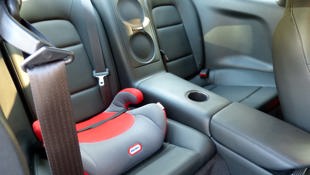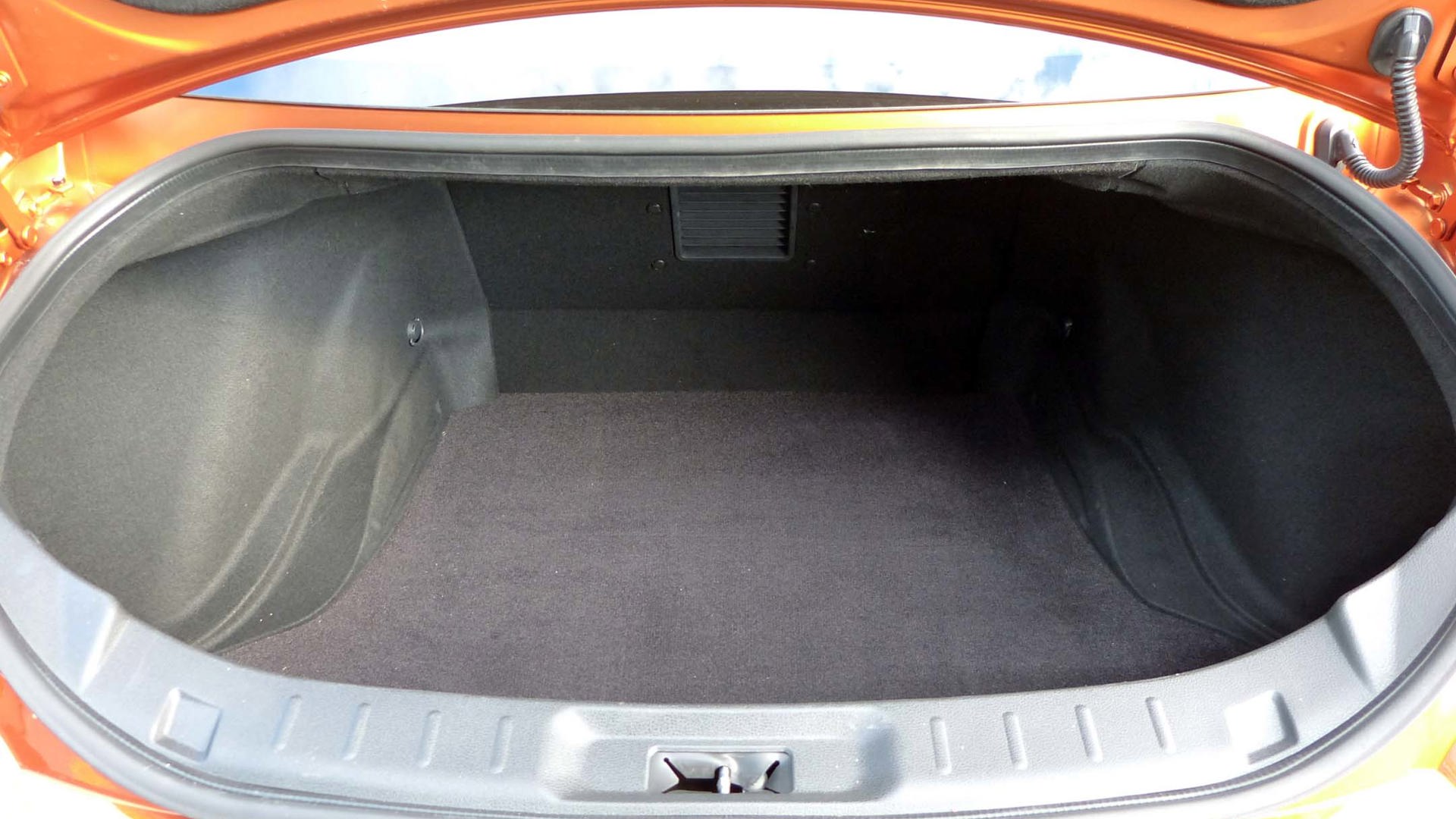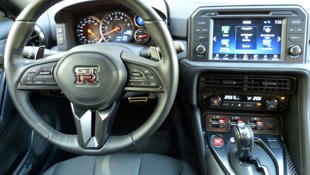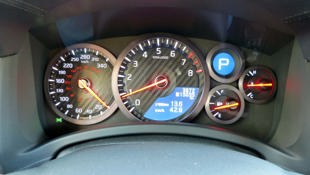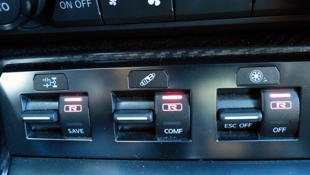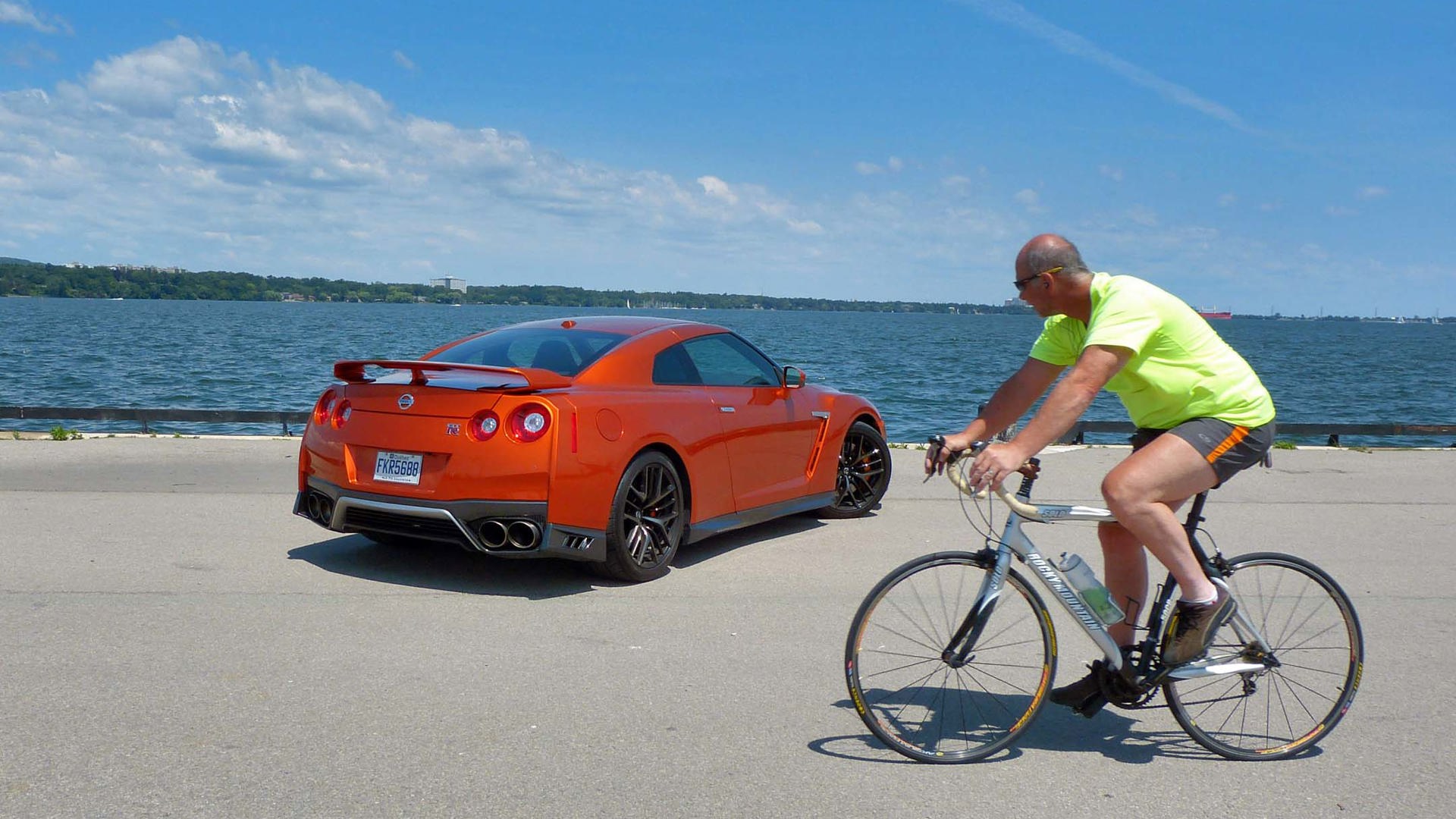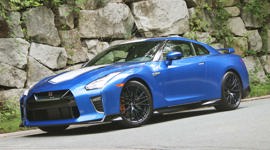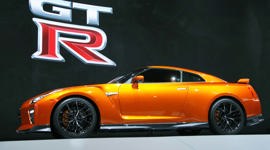 AutoTrader SCORE
AutoTrader SCORE
-
STYLING9/10
-
Safety7/10
-
PRACTICALITY6/10
-
USER-FRIENDLINESS7/10
-
FEATURES7/10
-
POWER8/10
-
COMFORT8/10
-
DRIVING FEEL7/10
-
FUEL ECONOMY8/10
-
VALUE8/10
Sheer, unadulterated sacrilege had swept across the mountain. A booing, hissing, braying mob of V8-loving Aussie jingoists were enraged. The unthinkable had happened: Mount Panorama, Bathurst, for so long a mecca for rear-wheel drive, V8-powered Aussie-made beasts, had been claimed by something unspeakable, in the worst possible circumstances.
This car is cop bait. Pure, unfettered cop-bait.
It wasn’t the first time a non-V8 had won, of course. Turbocharged Ford Sierras had been dominating the race for years by the time the 1992 Bathurst 1000 rolled around, and the Nissan Skyline GT-R had won the year before too. But on this occasion, the GT-R had won after crashing out.
All-wheel drive doesn’t help you stop or turn, something Jim Richards learned when he aquaplaned at Forest Elbow and careened into a pile of mangled Holden Commodores. With conditions too wet to continue, the race was red-flagged and declared. That red flag saw results wound back to the previous scored lap, which the Skyline had led, handing them the win. Worse, Aussie hero Dick Johnson’s Ford was still running, and many thought he was the winner, Johnson having crossed the line first on lap 144.
The race winners, Jim Richards and Mark Skaife, stood atop the podium and suffered a torrent of abuse, with the angriest and biggest bogans even throwing beer cans at the stage. Jim, a veteran of the sport, who’d learned during the race that his close friend, Denny Hulme, had died of a heart attack at the wheel, decided he’d had enough.
“This is bloody disgraceful,” he began. “I’ll keep racing but I’ll tell you what, this is going to remain with me for a long time.
“You’re a pack of arseholes.”
For many Australians, your writer included, this is our most lasting and earliest memory of the iconic Godzilla. Incidentally, that nickname for the GT-R was born in Australia too, or so we like to claim.
There are many cars that claim legendary status, but few with as much folklore attached to them as this Nissan. Not only a way to achieve supercar performance for a fraction of the cost, the GT-R is seared into hearts and minds as an all-conquering marauder.
The “Skyline” part is long gone, and the true fanatics never use “GT-R”, “Godzilla”, or “Skyline” anyway. They use “R32” or “R34” and they whisper those letters and numbers with the reverence of a bishop on his first tour of the Vatican. They pray at the altar of Brian O’Conner and speak endlessly about 1,000 hp mods done by a friend of a friend’s cousin.
This bright orange, $128,600 GT-R doesn’t have 1,000 hp, of course. But its standard 3.8L twin-turbo V6 is still good for 565 hp and 467 lb-ft of torque, all of which it distributes to four 20-inch wheels via a six-speed dual-clutch transmission.
That V6 sits far back in the hood, up against the firewall, while the transmission is packaged in a rear-mounted transaxle that also houses the AWD transfer case, thus distributing the GT-R’s 1,784 kg 54/46 percent front to back.
The GT-R looks bigger than it is on the outside, and feels much smaller than it is on the inside. This is the sort of thing I’d complain about in any regular passenger conveyance, but here the effect is positive. You don’t get in, you ensconce yourself. Settling into the cockpit and letting it wrap around you, the GT-R feels like a cocoon. Actually, it feels how I imagine the belly-gunner turret on a World War II bomber would feel. You’re wrapped up tight, but all the controls are right where you need them. It’s action stations, 100 percent of the time.
Are you the sort of driver who likes to flop about in their seat and lazily cruise down the road? Look elsewhere. The GT-R puts you at attention, from the deep, bolstered sport seats, to the thick-leather steering wheel and aluminum sport pedals. Those seats have a soft, thick leather surround, and a grippy suede insert. There are shoulder ports too, for those who might want to install a five-point harness.
This interior might be showing its age on the design front, but the fit and finish is first-class. All the materials are plush and supple, all the surfaces detailed and interesting.
Even the dead pedal in the GT-R is proper. It’s wide, aluminum, and rubber-clad – and prominent. The dead pedal here isn’t an option – it is where you will put your left foot and that’s all there is to it. Unless you want to left-foot brake of course, which you can and many will.
I’ve heard complaints that the GT-R is too digital, too serene, too detached. I wonder if the people who make that claim have ever actually driven the thing. The engine sings to its 7,100 rpm redline, the continuously variable valve-timing system working not only for maximum intake valve efficiency, but also to keep the engine note clean, sharp, and sexy.
Acceleration is indescribably rapid – you can and will get to 100 km/h in around 3 seconds and you will feel that sensation in the seat of your pants. We live in an age where a six-speed DCT sounds somehow lacking, but I can assure you this unit is not. The paddles snap the selector forks like a rifle bolt, and the GT-R whips through the box. Downshift, and that redline gets challenged by the car’s willingness to do what it’s told, not what it thinks it should do.
Apart from an upgraded 8.0-inch touchscreen in the centre stack, the GT-R’s instrument panel and controls look like something out of a ’90s video game – in the best possible way. The analogue gauges smashed together in the instrument cluster are retro, and while the LCD numbers and lettering are clearly behind the pack nowadays, they exude a cool factor that I couldn’t help but be charmed by. Likewise the drive mode toggles on the console.
There is something immensely satisfying about holding those toggles up and watching the “R” illuminate in red on all three settings: transmission, suspension, and electronic stability control. Not only is it visually fun, but those modes make a significant difference to the GT-R’s performance too. Especially the suspension settings.
Set everything to their right and true “R” settings, and the GT-R comes alive.
The GT-R turns in with the accuracy of a surgical tool, and maintains its line with dedication. Bumps in the road aren’t hidden from the occupants, but are insulated from the contact patches of the tires, which is frankly more important. The brakes bite hard, and with authority, much to the chagrin of my daughter who can now not find her favourite stuffy. (He’s under the passenger seat, and his little unicorn horn is stuck).
What the electric steering hides, the seat bottom calls your attention to, and the physical connection between driver and car is far more distinct than I expected.
I was shocked by how composed and pleasant the ride quality was when set to “comfort” mode. So much so I left it there for a really long time. Like, at least 10 minutes.
Do you care about fuel economy? The GT-R uses premium fuel, my week-long average was 13.6 L/100 km. Officially it’s good for 14.5/10.7 L/100 km city/hwy.
What about cargo capacity? The official rating is a dismal 249 L, but my large OGIO gear bag with all my racing gear fit in there with ease.
Do I have anything negative to say? Yeah, the bonnet struts are a cheap flimsy manual unit, not hydraulic. Whether that’s weight-saving or cost-saving I couldn’t tell you. But when you want to show people the stunning red and silver anodized engine covers in your $125,000 sports car and you first have to fiddle with the same rickety prop from your friend’s Versa Note, it takes away from the experience a bit.
Also, this car is cop bait. Pure, unfettered cop-bait. It’s not a car you can hide in. You will get way too much attention in a GT-R, everyone at every fuel station, every passerby (including fluoro-clad cyclists) and every school kid will want to talk to you about it. This is of course, terrible, because I hate attention.
Except I don’t.
To be honest, I expected little when I picked up the 2017 Nissan GT-R. I wasn’t sure the aging platform could live up to the hype – especially given the complaints I’d heard from others about it being too digital.
But within a few hundred metres I was completely on board with the fanboys. Within mere seconds I understood the appeal. I had my GT-aaahhh moment, and I wanted more.
Nissan’s halo car holds a rightful place in automotive history. It’s a technical tour de force that somehow maintains its attachment to the deepest regions of a driver’s soul.
And it looks bloody great too.
| Engine Displacement | 3.8L |
|---|---|
| Engine Cylinders | V6 |
| Peak Horsepower | 565 hp @ 6,800 rpm |
| Peak Torque | 467 lb-ft @ 3,300–5,800 rpm |
| Fuel Economy | 14.5/10.7/12.8 L/100 km cty/hwy/cmb |
| Cargo Space | 249 L |
| Model Tested | 2017 Nissan GT-R Premium |
| Base Price | $125,000 |
| A/C Tax | $100 |
| Destination Fee | $2,500 |
| Price as Tested | $128,600 |
|
Optional Equipment
$1,000 – Blaze Metallic paint $1,000
|
|
